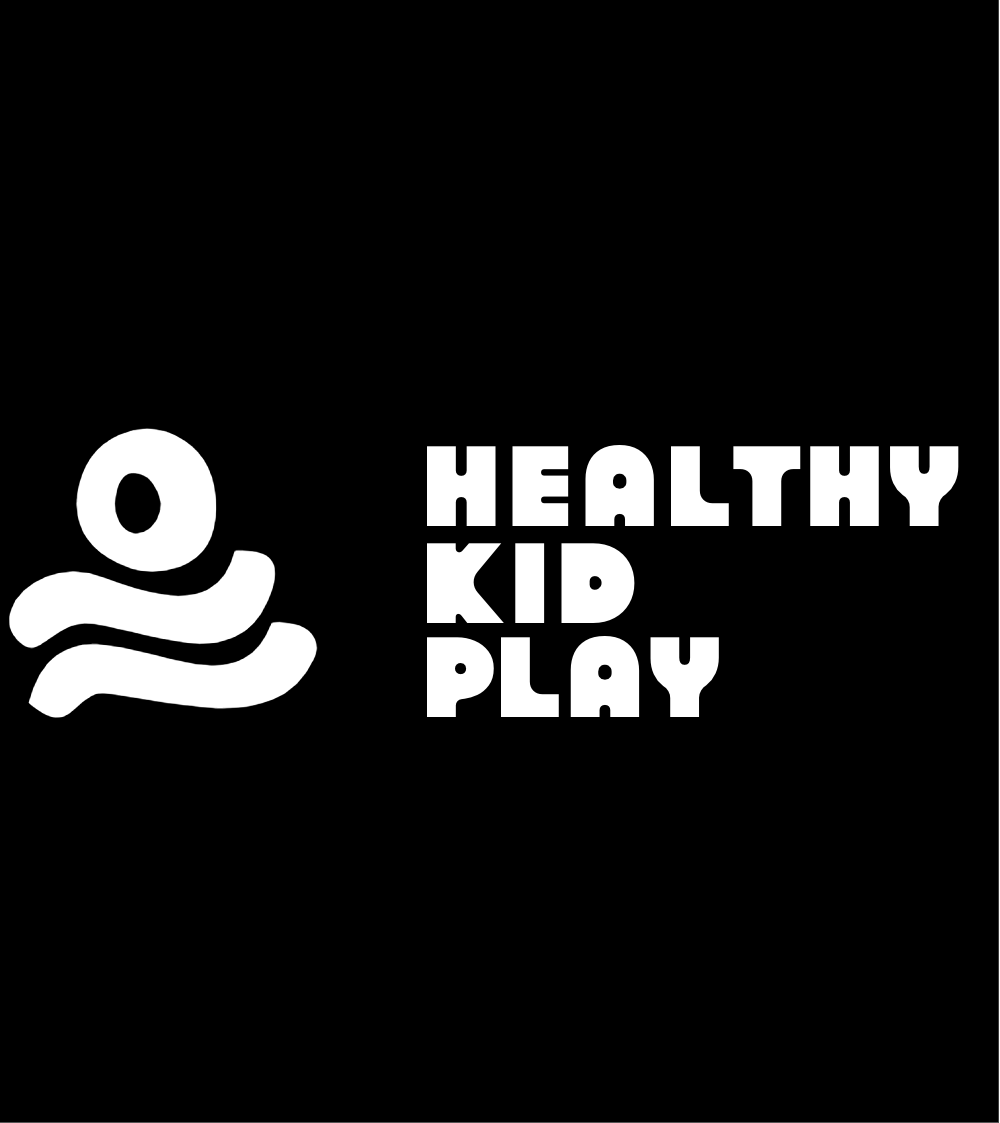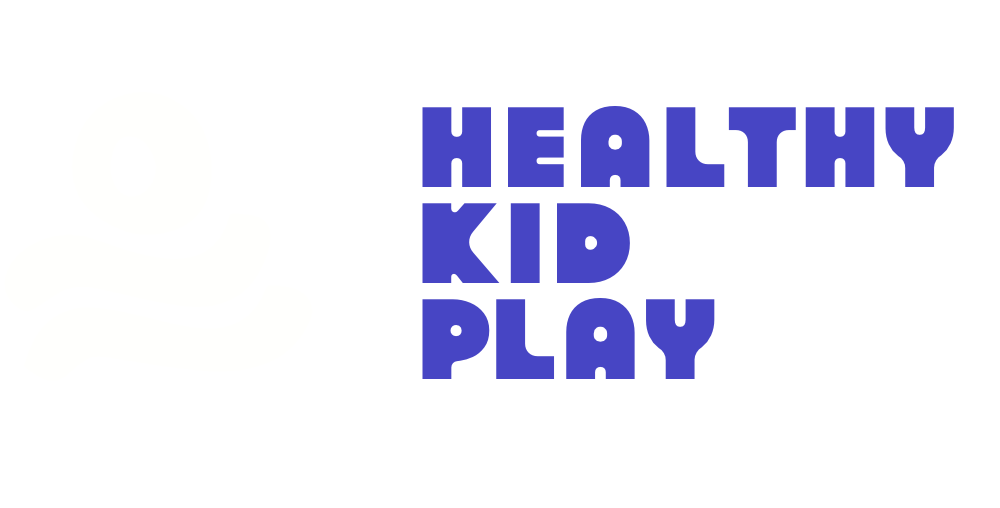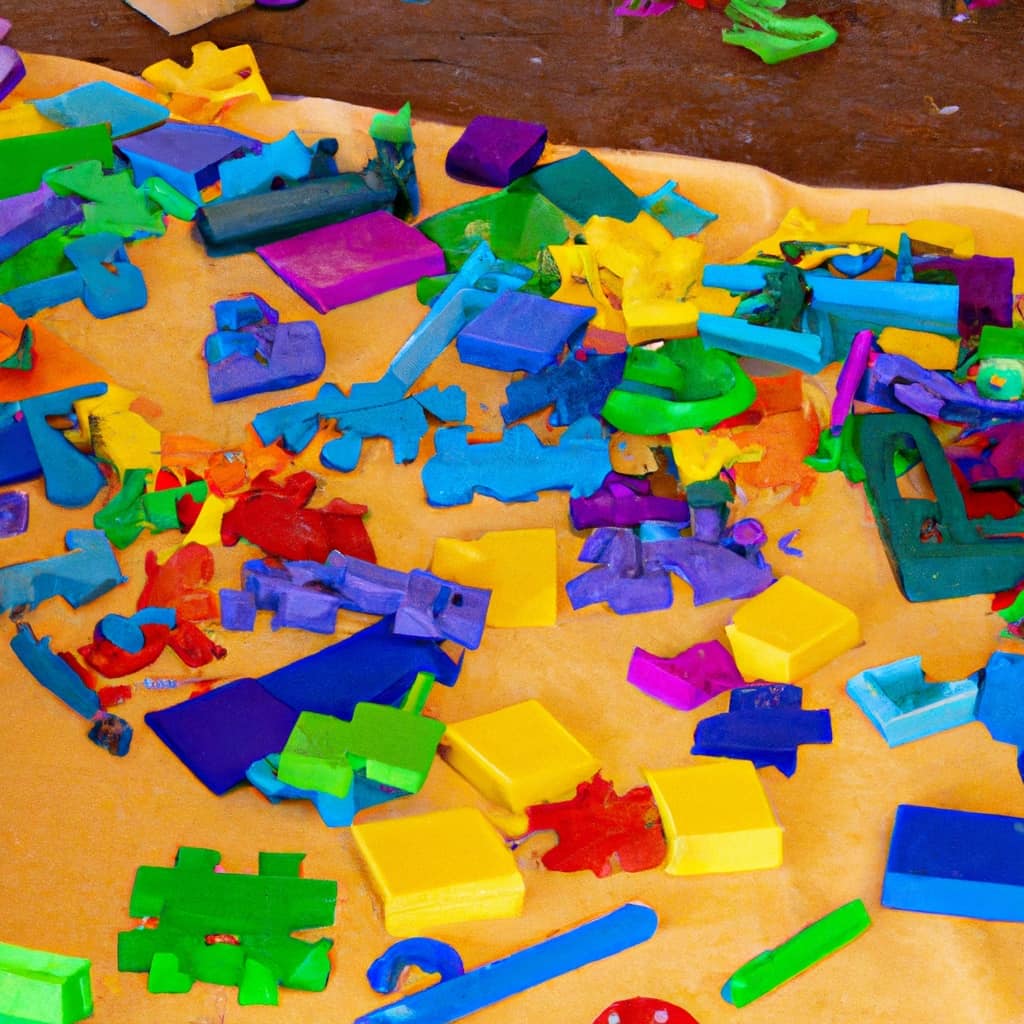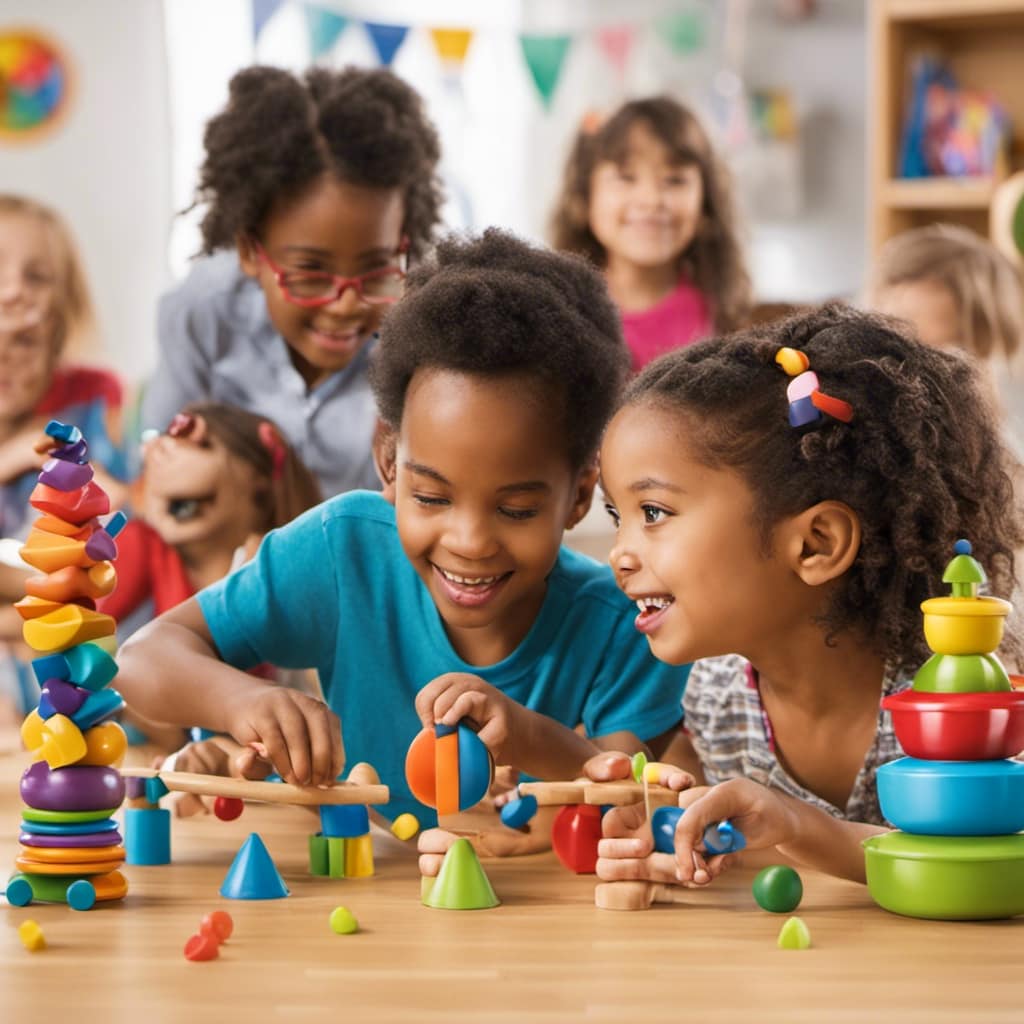Child Development
The Impact of Family Dynamics on Child Development
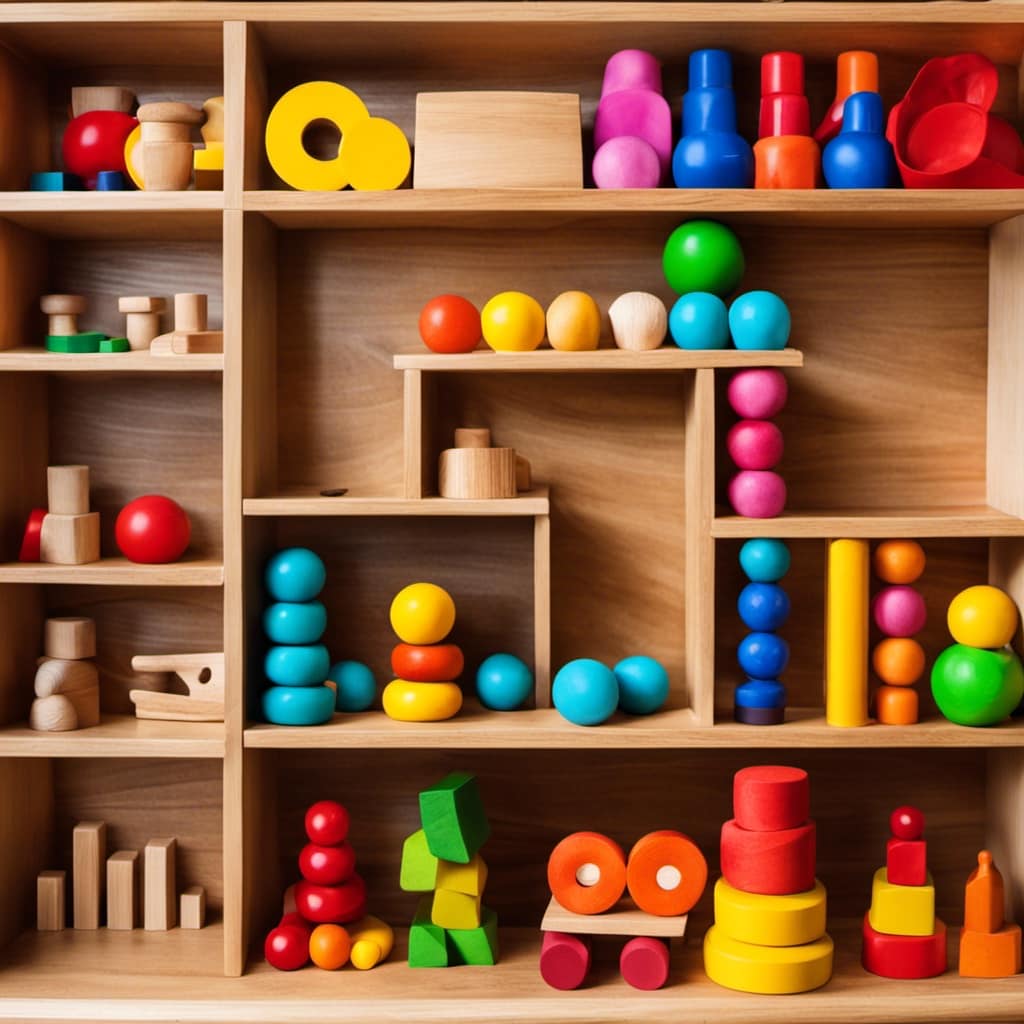
As a parent, I’m always pondering the influence of our family dynamics on the growth of my child. How does the way I parent, the bond my child shares with their siblings, and the overall structure of our family impact their happiness and health?
It’s important to delve into these questions and gain a deeper understanding. Authoritative parenting fosters positive social interactions and academic achievement, while authoritarian, permissive, and neglectful styles have negative effects.
Sibling relationships, family structure, and parent-child attachment also play significant roles.
Join me as we explore the fascinating world of family dynamics and their profound impact on child development.
Key Takeaways
- Different parenting styles have varying effects on child development, with authoritative parenting promoting positive social interactions and academic achievement, while authoritarian, permissive, and neglectful parenting styles can hinder development in different ways.
- Sibling relationships can have both positive and negative impacts on child development, with sibling rivalry potentially leading to aggression and reduced self-esteem, but also providing emotional support and helping develop important social skills.
- Family structure, specifically growing up in a two-parent household, is associated with higher academic achievement in children compared to single-parent households. Parenting styles within different family structures can also influence a child’s social skills development.
- The quality of parent-child attachment formed in infancy has long-lasting effects on a child’s ability to form healthy relationships and regulate emotions, with secure attachment promoting positive outcomes and insecure attachment leading to difficulties in emotional regulation and interpersonal relationships.
Parenting Styles and Child Development
I believe that understanding different parenting styles can help me make informed decisions about raising my child.
The role of discipline in child development is crucial. Research shows that the authoritative parenting style, which combines warmth and support with clear expectations and consistent discipline, is associated with positive social interactions and academic achievement.
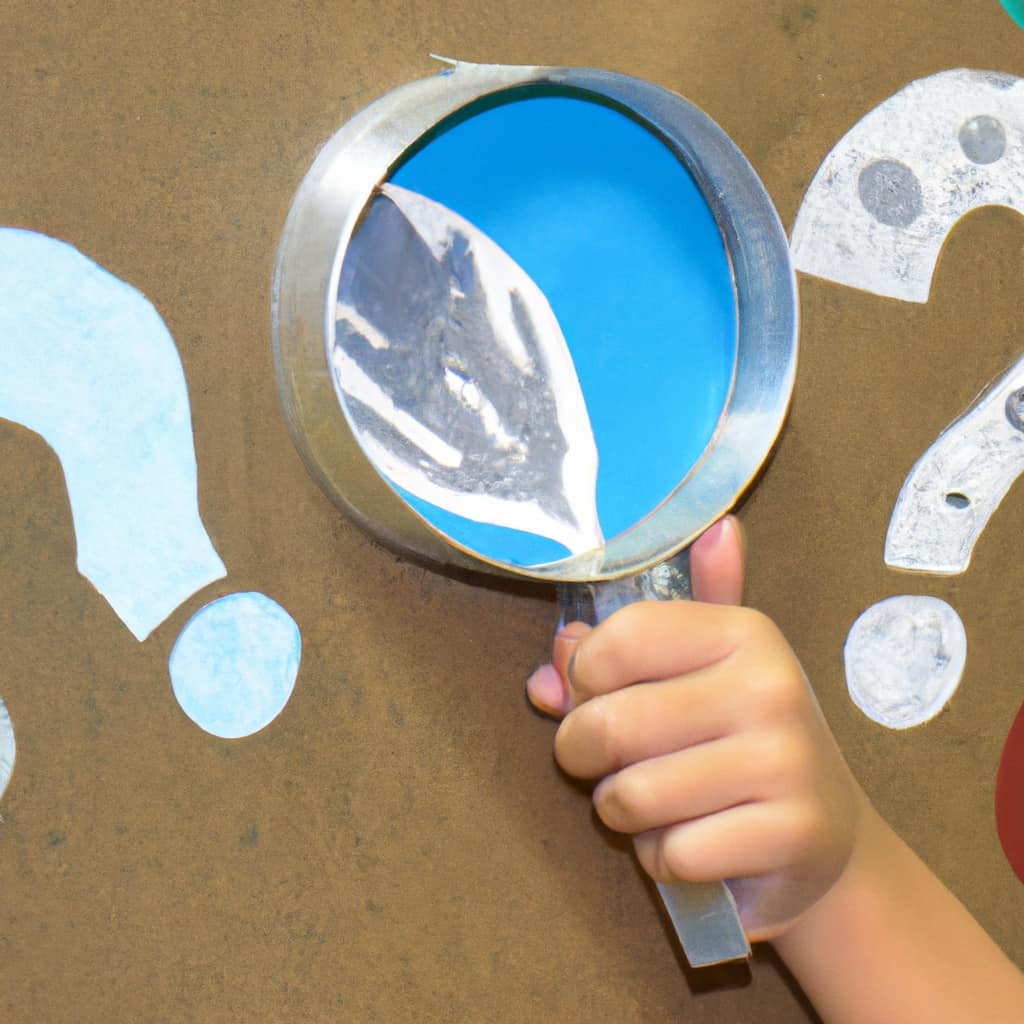
On the other hand, the authoritarian parenting style, characterized by strict rules and harsh discipline, has negative effects on child development, including difficulties with self-control and lower academic achievement.
Additionally, permissive parenting, where there are few rules and little discipline, can lead to children who have difficulty following rules and struggle with self-control.
The influence of parental expectations on child development is also important. Parents who have high expectations for their children’s behavior and achievements tend to foster their child’s development in a positive way, while low expectations can hinder their progress.
Understanding these different parenting styles and their impact on child development can guide me in creating a nurturing and supportive environment for my child.
Sibling Relationships and Child Development
Growing up with siblings can shape important social skills and emotional well-being. Sibling relationships have a significant impact on child development, and understanding this influence can help parents support their children’s growth. Here are three key points to consider:
-
Impact of sibling rivalry on child development:

-
Sibling rivalry can lead to increased aggression and reduced self-esteem in children.
-
It can also hinder the development of social skills, as children may struggle with sharing and cooperation.
-
Addressing and managing sibling rivalry is important to promote positive sibling relationships and overall well-being.
-
Birth order effects on sibling relationships:
-
Birth order can shape sibling relationships and dynamics.
-
Older siblings often take on a protective and nurturing role, while younger siblings may look up to their older siblings as role models.

-
Birth order can influence sibling interactions, communication styles, and the development of individual personalities.
Understanding the impact of sibling relationships and birth order on child development can help parents create a supportive and nurturing environment for their children. By promoting positive sibling interactions, addressing sibling rivalry, and considering individual needs and personalities, parents can help their children develop important social skills and emotional well-being.
Family Structure and Child Development
Living in a two-parent household can have a positive influence on a child’s academic achievement and social skills. Research has shown that parenting styles play a crucial role in shaping a child’s development.
In two-parent households, the presence of both parents allows for a more balanced and consistent approach to parenting. Authoritative parenting, characterized by warmth, support, and reasonable expectations, has been linked to higher academic achievement and positive social interactions. On the other hand, authoritarian or permissive parenting styles can hinder the development of social skills.
Additionally, sibling relationships also play a role in social skills development. Siblings can provide emotional support, serve as role models, and help children develop important social skills.
Therefore, the combination of a two-parent household and positive parenting styles can greatly contribute to a child’s academic success and social well-being.
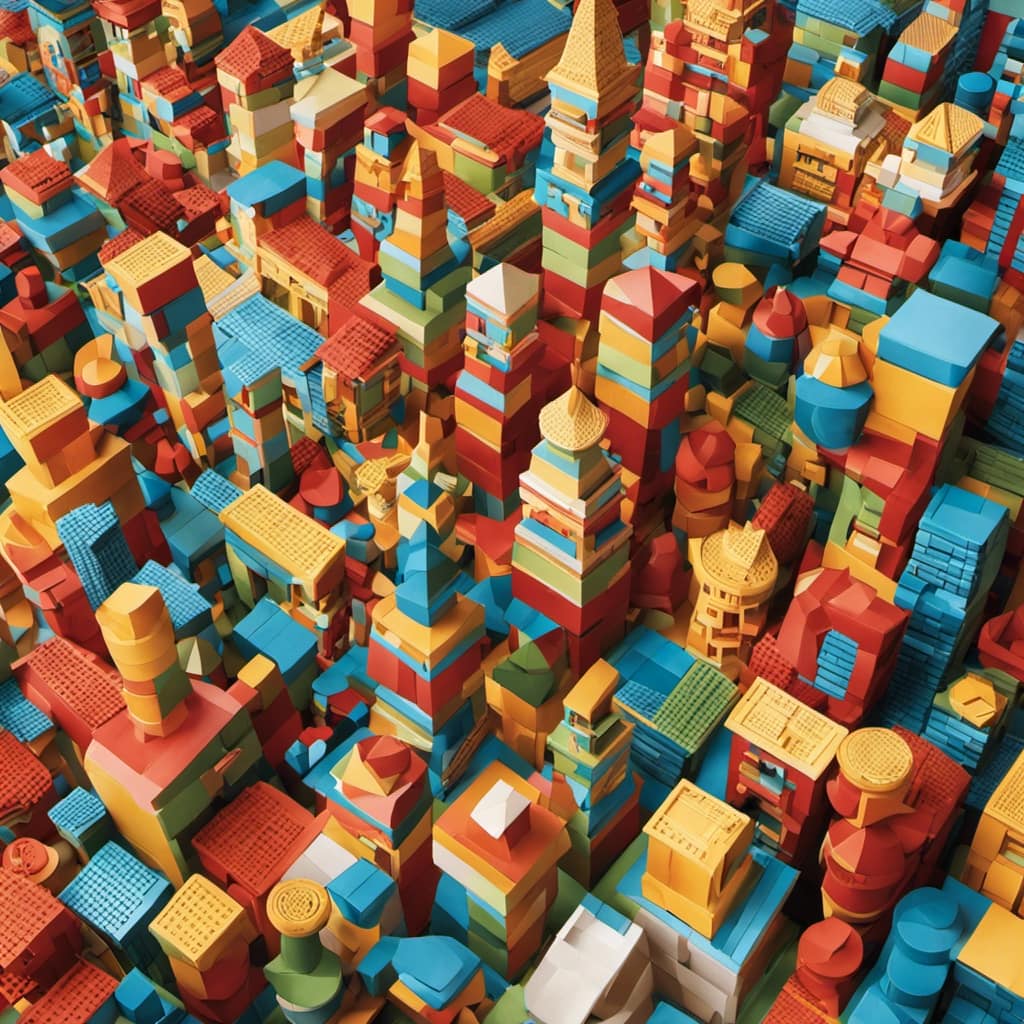
Parent-Child Attachment and Child Development
Understanding the role of parent-child attachment is crucial in optimizing my child’s development outcomes. The early experiences we have with our children shape their attachment patterns, which in turn impact their cognitive development.
-
Early experiences: The quality of the parent-child relationship in the first years of life has a profound impact on attachment formation. Consistent and responsive caregiving promotes secure attachment, while inconsistent or neglectful caregiving can lead to insecure attachment.
-
Insecure attachment: Children who have insecure attachment may struggle with emotional regulation and have difficulty forming healthy relationships. Insecure attachment has been linked to lower cognitive development, including problems with attention, memory, and problem-solving skills.
-
Cognitive development: Secure attachment provides a foundation for healthy cognitive development. When children feel secure and supported by their caregivers, they are more likely to explore their environment, engage in learning activities, and develop strong cognitive skills.
Family Resilience and Child Development
Building strong relationships, effective communication, and problem-solving skills in my family helps to foster resilience and positively shape my child’s development. Family resilience plays a crucial role in promoting emotional well-being and overall child development.
When families have strong bonds and open lines of communication, they create a supportive environment that helps children navigate challenges and develop important coping skills. Effective problem-solving skills teach children how to overcome obstacles and find solutions, promoting their resilience in the face of adversity.

The Role of Emotional Regulation in Child Development
Experiencing and managing a wide range of emotions is essential for my child’s growth and overall well-being. Emotional regulation techniques play a crucial role in helping children navigate their emotions effectively. Here are three important impacts of emotional dysregulation on child development:
-
Social Skills: When a child struggles with emotional dysregulation, it can hinder their ability to form positive relationships and interact with others. Teaching my child emotional regulation techniques, such as deep breathing or identifying their feelings, can help them develop better social skills.
-
Academic Performance: Emotional dysregulation can negatively impact a child’s ability to concentrate and focus on their studies. By teaching my child strategies to manage their emotions, like taking breaks or using positive self-talk, I can help them perform better academically.
-
Mental Health: Unmanaged emotions can contribute to mental health issues in children. By teaching my child how to regulate their emotions, I can help them build resilience and reduce the risk of developing mental health problems.
The Influence of Parental Involvement on Child Development
Being actively involved in my child’s life and education has a significant influence on their overall growth and well-being. Parental involvement plays a crucial role in a child’s development, impacting various aspects of their lives.
Research has shown that when parents are actively involved in their child’s education, it leads to improved academic performance, higher self-esteem, and enhanced social skills.
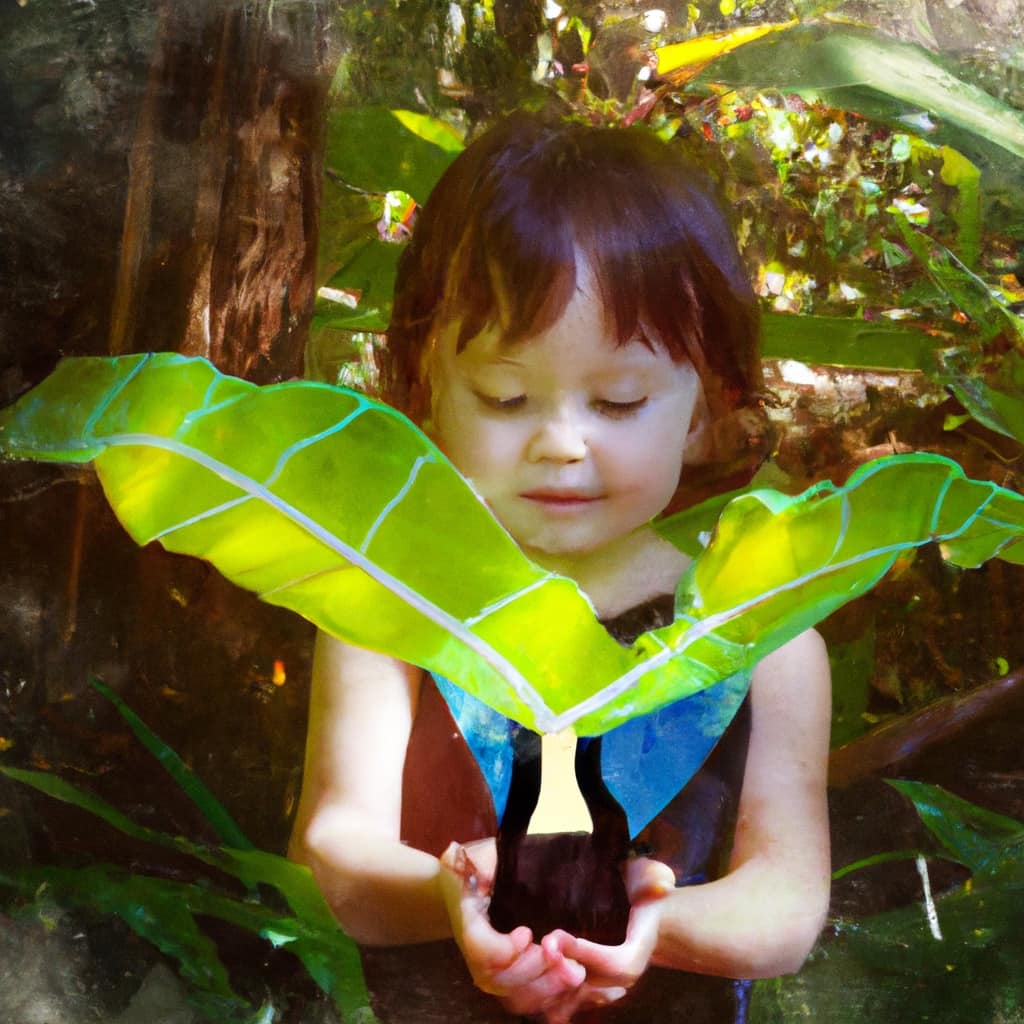
Additionally, parental involvement promotes the development of emotional regulation in children. By providing a supportive and nurturing environment, parents can help their children learn how to manage their emotions effectively, cope with stress, and build healthy relationships.
Parents can foster emotional regulation by being attentive, validating their child’s feelings, and teaching them coping strategies.
Ultimately, parental involvement and emotional regulation work hand in hand to support a child’s overall development and well-being.
The Effects of Divorce on Child Development
Divorce has significant effects on my child’s overall growth and well-being, including potential impacts on their academic performance, emotional regulation, and social skills.
The effects of co-parenting on child development:
- Positive co-parenting can provide stability and consistency for the child, minimizing the disruption caused by divorce.
- Effective co-parenting can promote healthy communication, problem-solving, and conflict resolution skills in the child.
- Inconsistent or conflict-ridden co-parenting can lead to emotional distress, decreased academic performance, and difficulties in forming and maintaining relationships.
The role of therapy in mitigating the effects of divorce on child development:

- Therapy can provide a safe space for the child to express their emotions and process the changes and challenges associated with divorce.
- Therapists can help children develop coping strategies and resilience to navigate the changes in their family dynamics.
- Therapy can also support parents in learning effective co-parenting strategies and communication skills, promoting a healthy and supportive environment for the child.
It is important to prioritize the well-being of the child during and after a divorce, and seeking therapy can be a valuable resource in mitigating the negative effects and promoting positive development.
Cultural and Ethnic Influences on Child Development
Growing up in a multicultural household has shaped my perspectives and influenced my personal growth in various ways.
One important aspect of cultural and ethnic influences on child development is cultural identity development. Children raised in multicultural households have the opportunity to explore and embrace different cultural traditions, languages, and values. This can foster a strong sense of cultural identity and pride.
Cross cultural parenting methods also play a significant role. Parents who use cross cultural parenting methods effectively expose their children to diverse perspectives, promote cultural understanding, and encourage respect for different traditions. This can enhance a child’s social and emotional development, as well as their ability to navigate and appreciate diverse communities.
The Impact of Socioeconomic Status on Child Development
Living in a low socioeconomic status environment has presented unique challenges that have shaped my experiences and influenced my personal growth in various ways. The impact of socioeconomic status on child development can be seen in academic achievement and social skills development.
-
Academic Achievement:

-
Limited access to educational resources and quality schools can hinder academic progress.
-
Financial constraints can limit opportunities for enrichment activities and tutoring.
-
High levels of stress and instability can affect concentration and motivation.
-
Social Skills Development:
-
Limited social interactions due to financial constraints can impact the development of social skills.
-
Exposure to violence and crime in low-income neighborhoods can affect socialization.

-
Limited access to extracurricular activities and community resources can hinder the development of teamwork and communication skills.
Overall, the impact of socioeconomic status on child development highlights the importance of addressing inequalities and providing support to children in low-income environments to ensure equal opportunities for success.
The Role of Extended Family in Child Development
Having a strong support system from extended family members has greatly influenced my personal growth and contributed to a positive environment for my child’s development.
The importance of intergenerational relationships in child development cannot be overstated. Extended family members, such as grandparents, aunts, and uncles, play a vital role in promoting resilience in children.
They provide a sense of belonging, emotional support, and guidance, which helps children navigate life’s challenges. Research shows that children who have positive relationships with their extended family members exhibit higher levels of self-esteem, social competence, and overall well-being.
The role of extended family support in promoting resilience in children is crucial, as it strengthens their sense of identity, fosters a sense of belonging, and provides additional sources of love and care.
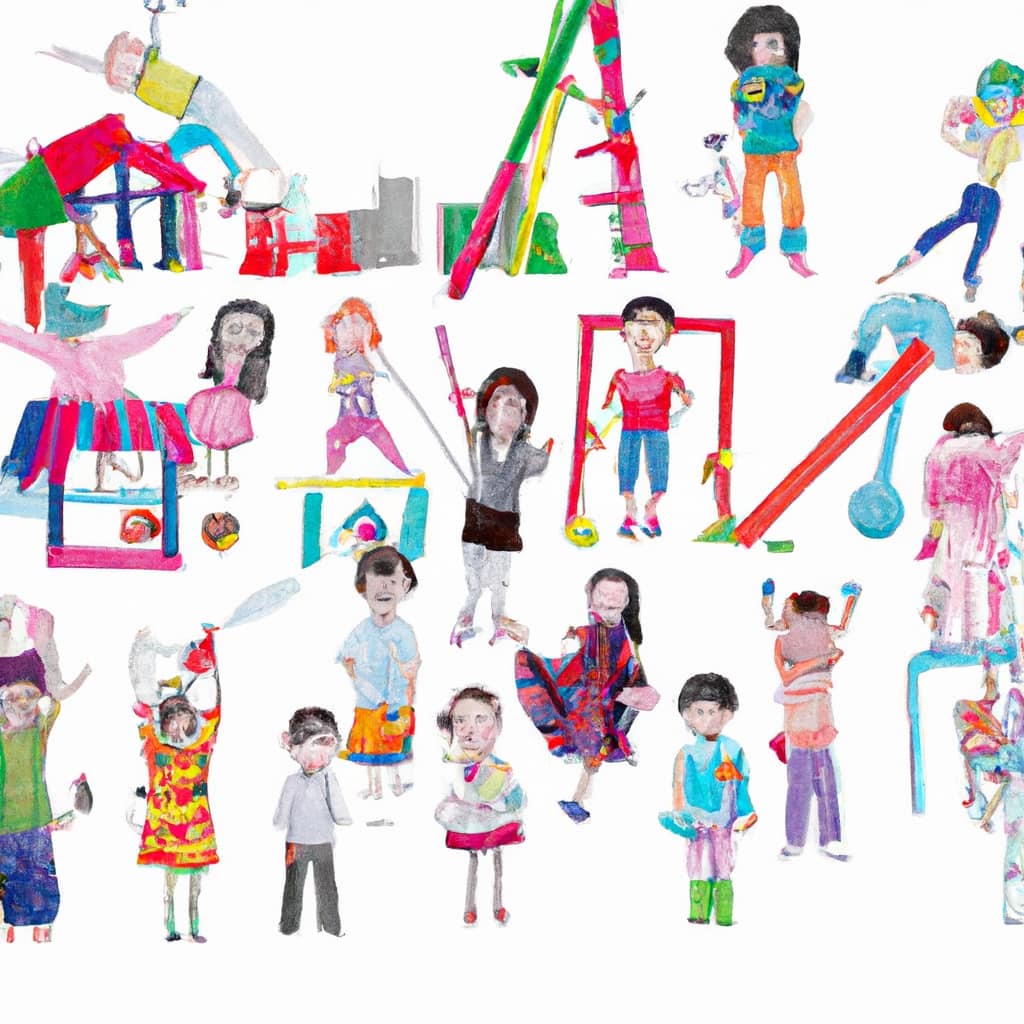
These intergenerational relationships contribute to a nurturing and supportive environment that enhances a child’s development.
Frequently Asked Questions
How Do Different Parenting Styles Impact a Child’s Emotional Regulation?
Different parenting styles can have a significant impact on a child’s emotional regulation. Role modeling in emotional regulation by authoritative parents can promote healthy regulation, while inconsistent parenting can disrupt emotional regulation abilities.
What Are the Long-Term Effects of Sibling Rivalry on a Child’s Social Skills?
Sibling rivalry can have long-term effects on a child’s social skills development. It can lead to increased aggression, lower self-esteem, and poorer social skills. Understanding and addressing sibling rivalry is crucial for promoting healthy social development in children.
How Does the Emotional Attachment Between a Parent and Child Affect the Child’s Ability to Form Healthy Relationships?
The emotional bond between a parent and child greatly impacts the child’s ability to form healthy relationships. Attachment styles, such as secure or insecure, can have long-lasting effects on emotional regulation and interpersonal connections throughout life.
How Does Family Resilience Contribute to a Child’s Overall Well-Being and Development?
Family resilience is crucial for a child’s well-being and development. It helps them cope with stress and adversity, fostering a supportive environment. Strong relationships, effective communication, and problem-solving skills are key in building family resilience.
How Does the Structure of a Family (Single-Parent Household Vs. Two-Parent Household) Influence a Child’s Social Skills Development?
The structure of a family, whether single-parent or two-parent, can impact a child’s social skills development. For example, divorce may influence social skills, while blended families can have varying effects on social development.
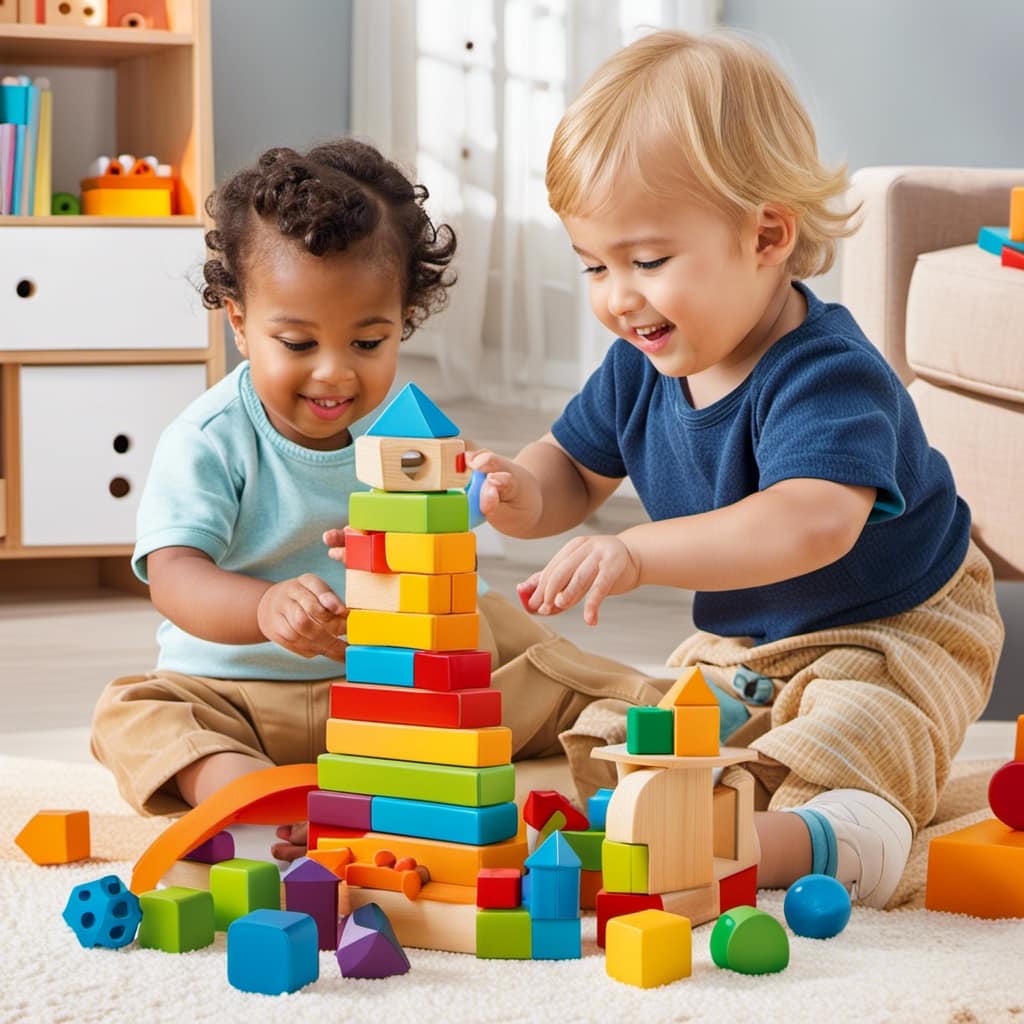
Conclusion
In conclusion, understanding the impact of family dynamics on child development is essential for parents and caregivers.
The various aspects discussed in this article, such as parenting styles, sibling relationships, family structure, parent-child attachment, and family resilience, all play a crucial role in shaping a child’s well-being.
It is important to recognize that our actions and behaviors as parents have a profound effect on our children’s growth and development. As the saying goes, ‘Actions speak louder than words.’
By actively engaging in positive parenting practices, fostering healthy sibling relationships, creating a supportive family structure, forming secure parent-child attachments, and building family resilience, we can provide our children with a strong foundation for their future success and happiness.
With a vivid imagination and a love for words, Hella crafts stories and guides that ignite curiosity and inspire both children and parents. Her talent for storytelling is evident in every piece she writes for Healthy Kid Play. Merging her understanding of children’s needs with creativity, Hella’s writings are both informative and enchanting.
Child Development
Enhance Learning and Creativity With Magnetic Blocks
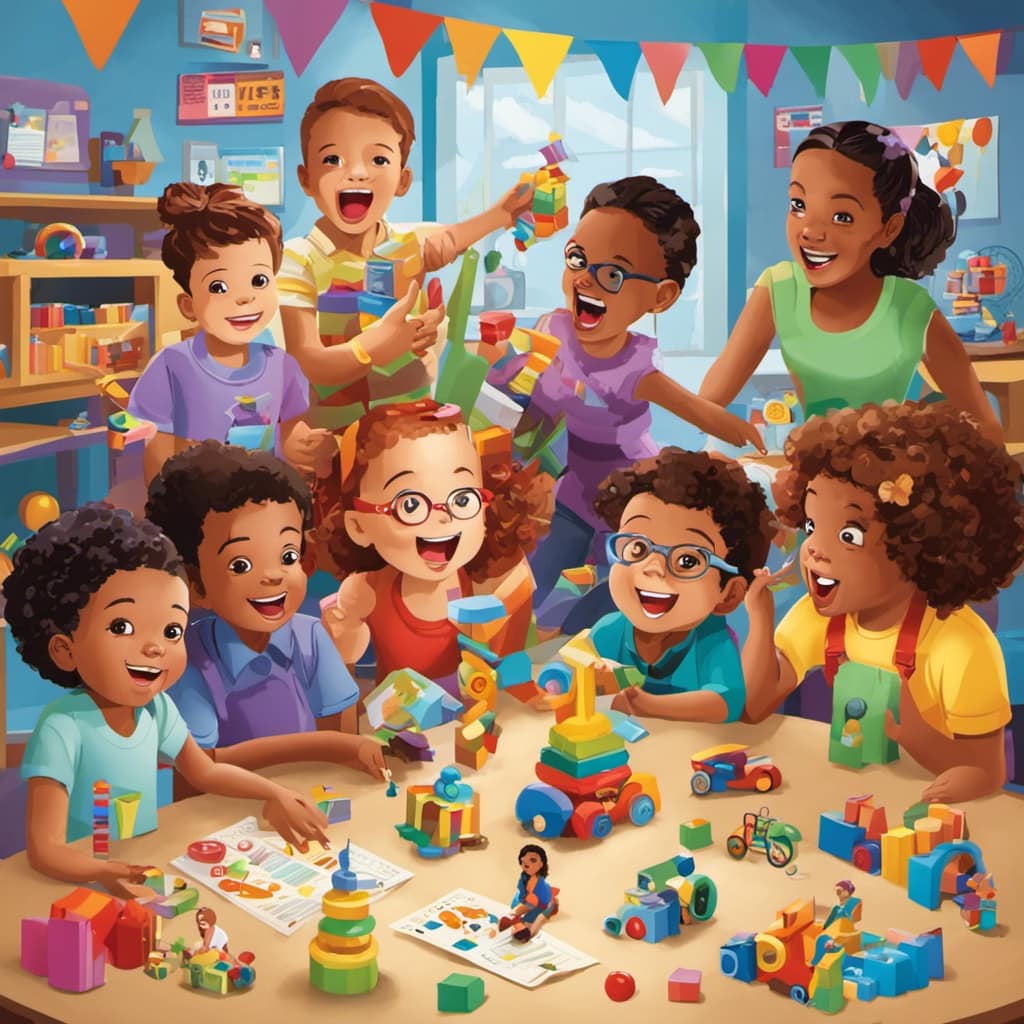
Constantly on the lookout for toys that ignite creativity and foster learning, I immerse myself deeply in the field of child development as an avid enthusiast. My quest is to find the brightest and most engaging toys out there. Each discovery I make is more than just a toy; it’s a stepping stone for imagination and knowledge. These finds not only encourage creativity but also make learning exciting. You will learn how to choose the very best toys that stimulate young minds. **Prepare to be amazed** by insights and interesting facts that are not widely known. Ideal for keen parents and educators, this guide uncovers the secrets of picking toys that spark curiosity. Stay with me, and I’ll demonstrate why these selections are too enticing to overlook.
That’s why I am excited to introduce you to the world of magnetic blocks. These versatile toys are not only fun to play with but also offer numerous educational benefits.
From fostering imagination to enhancing cognitive development, magnetic blocks are a must-have for children aged 3-5.
Let me show you how these blocks can unlock a world of learning and creativity for your little ones.
Key Takeaways
- Magnetic blocks for toddlers by Toylogy enhance learning and creativity.
- They promote STEM sensory and Montessori learning, developing color recognition and 3D spatial thinking.
- Magnetic blocks improve math, art, and tactile motor skills, enhancing concentration and confidence in children.
- These blocks make an ideal gift for children aged 3-5 years old, providing hours of entertainment and learning while encouraging creativity and problem-solving skills.
The Benefits of Magnetic Blocks in Early Childhood Education
I’ve seen firsthand how magnetic blocks can enhance learning and creativity in early childhood education. These blocks are not just toys; they are powerful tools that promote cognitive development in young children.
One of the key benefits of magnetic blocks is that they help build spatial awareness. As children manipulate the blocks and connect them together, they begin to understand how objects fit together in space. This skill is essential for future math and science learning.
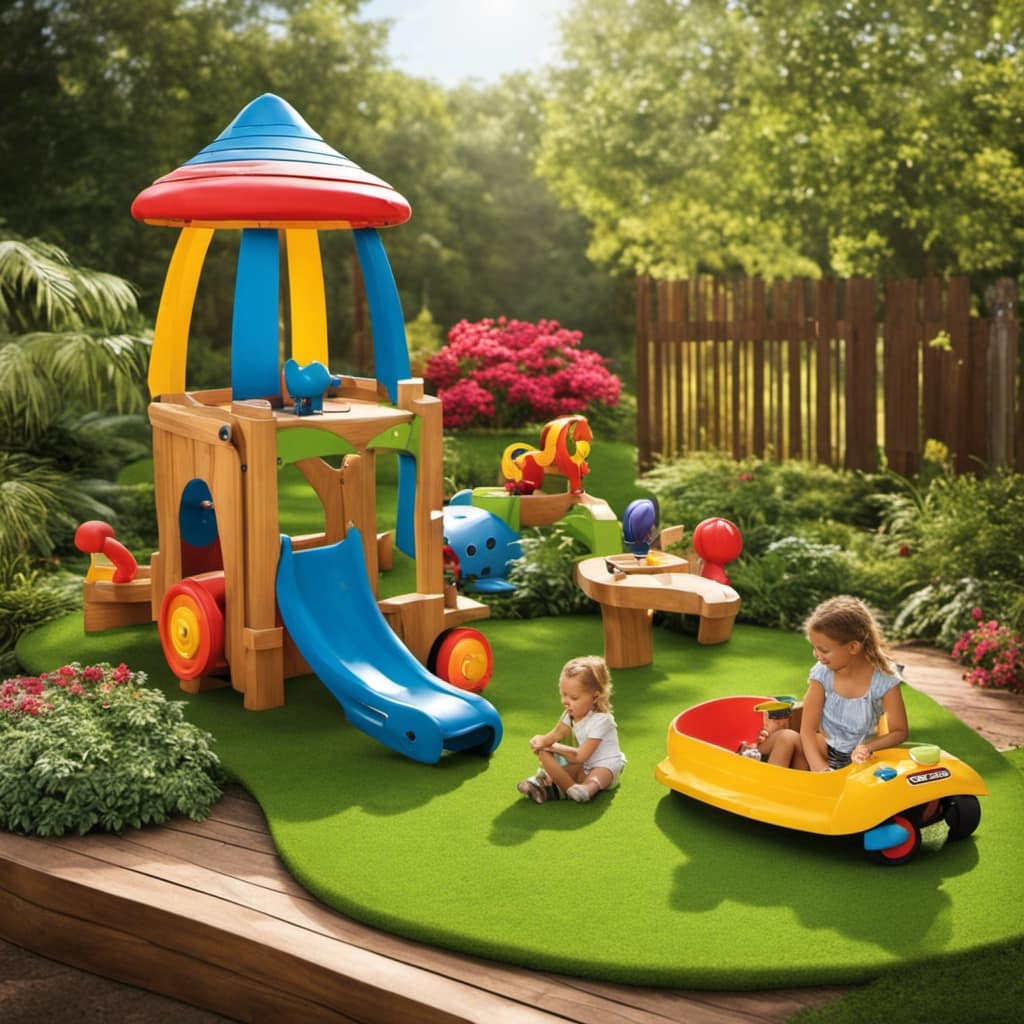
Magnetic blocks also encourage cooperative play. Children can work together to build structures, solve problems, and communicate their ideas. This fosters teamwork, social skills, and the ability to collaborate effectively.
How Magnetic Blocks Foster Creativity and Imagination
Playing with magnetic blocks opens up a world of endless possibilities and allows children to explore their imagination to the fullest. Here are some ways magnetic blocks foster creativity and imagination:
-
Sparking imagination: Magnetic blocks encourage open-ended play, allowing children to build and create anything they can imagine.
-
Enhancing social skills: Magnetic blocks play a vital role in cooperative play, as children can collaborate and work together to build structures and solve problems.
-
Developing problem-solving skills: Through experimenting and trial-and-error, children learn how to overcome challenges and find solutions while playing with magnetic blocks.
-
Promoting spatial awareness: Manipulating magnetic blocks helps children develop a sense of space and understand how different shapes and objects fit together.
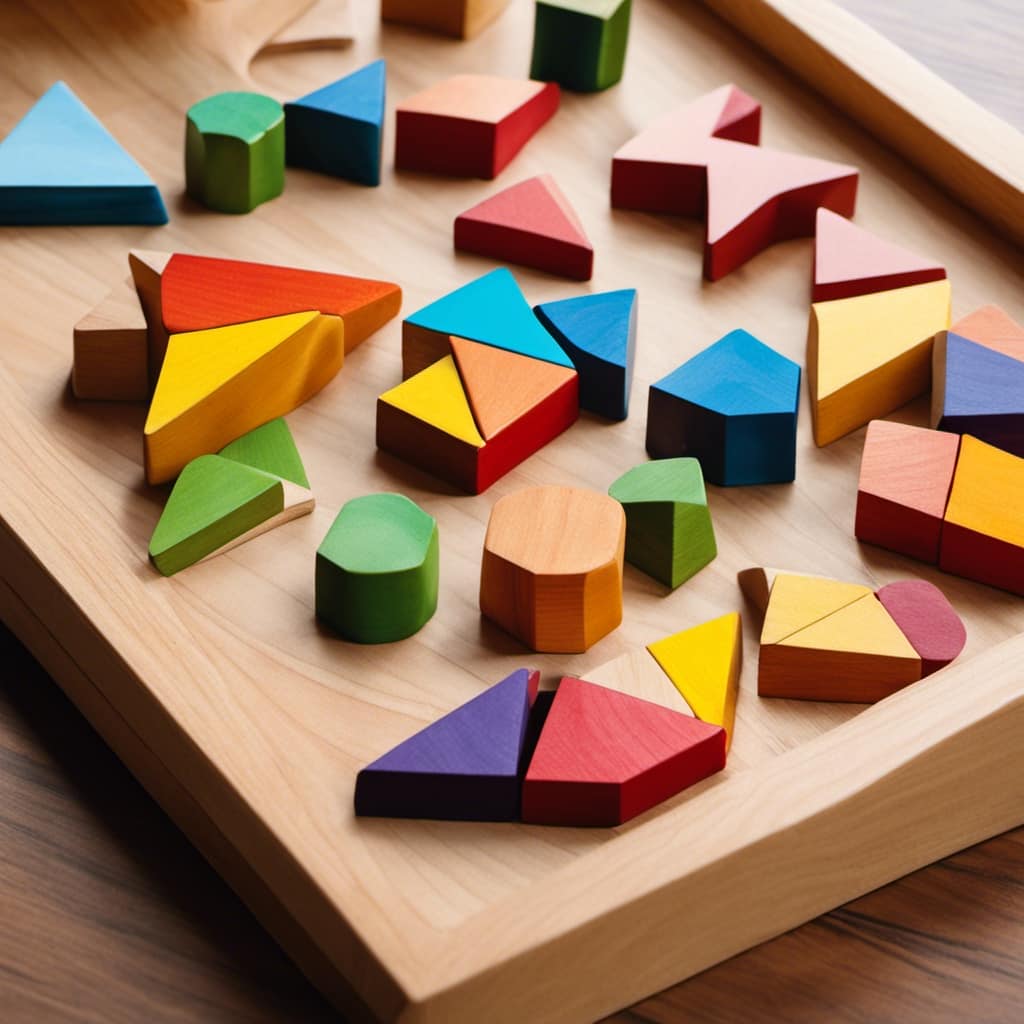
-
Inspiring storytelling: Magnetic blocks can be used to create scenes and tell stories, promoting language development and creativity.
Overall, magnetic blocks are a versatile and educational toy that fosters creativity, enhances social skills, and sparks imagination in children.
Enhancing Cognitive Development Through Magnetic Block Play
Manipulating and building with magnetic blocks engages children’s cognitive abilities, promoting problem-solving, spatial awareness, and storytelling skills.
Research has shown that magnetic block play in preschoolers offers numerous cognitive benefits. By manipulating the blocks, children are able to develop their problem-solving skills as they figure out how to connect and build different structures.
This hands-on learning experience also enhances their spatial awareness, as they learn to visualize and manipulate shapes and objects in their minds. Additionally, magnetic blocks provide a tool for storytelling, allowing children to create narratives and use their imagination.
This type of play is a valuable tool in early childhood education, as it encourages creativity and critical thinking skills. Overall, magnetic blocks offer a fun and engaging way for children to enhance their cognitive development.

Exploring STEM Concepts With Magnetic Blocks
As a writer at Toddler Ride On Toys, I’ve discovered that exploring STEM concepts with magnetic blocks can spark curiosity and foster early interest in science, technology, engineering, and math.
Here are five reasons why magnetic blocks are a great tool for early childhood education:
- Encourages hands-on exploration and experimentation
- Develops critical thinking and problem-solving skills
- Enhances spatial awareness and geometry understanding
- Promotes creativity and imagination through open-ended play
- Builds strong foundation for future STEM learning
Research has shown that engaging children in STEM activities at an early age can have a lasting impact on their cognitive development. Magnetic blocks provide a fun and interactive way for children to learn and apply STEM concepts.
Developing Fine Motor Skills With Magnetic Blocks
I’ve noticed that using magnetic blocks helps me improve my fine motor skills while I build structures and explore different shapes and colors. Building dexterity with magnetic blocks is a fun and engaging way to enhance hand-eye coordination.
As I manipulate the blocks, my fingers and hands become more agile, allowing me to pick up, stack, and connect the blocks with precision. This activity requires concentration and control, which in turn improves my fine motor skills.
Additionally, magnetic blocks provide sensory stimulation, as I feel the satisfying click when the magnets connect. The different shapes and colors also enhance my cognitive development, as I learn to recognize patterns and create unique designs.
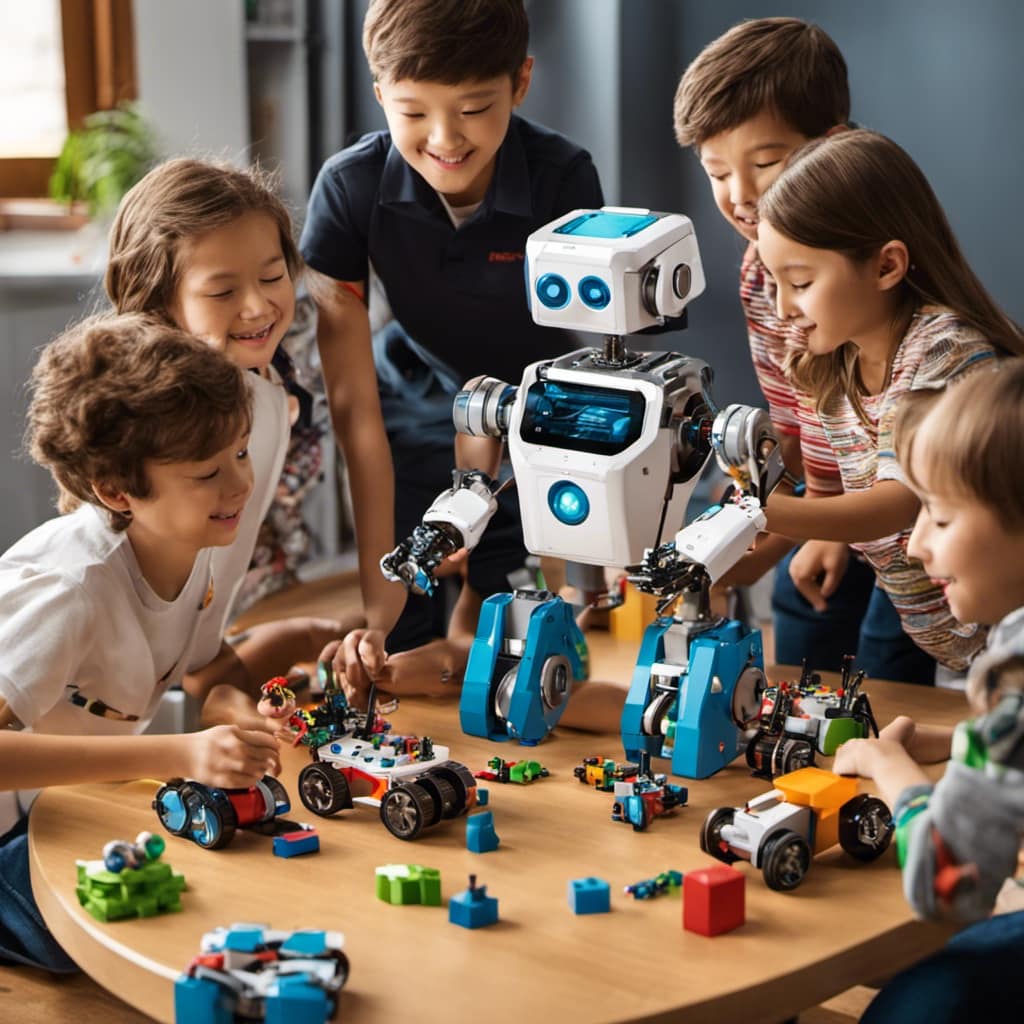
Overall, playing with magnetic blocks is not only enjoyable but also beneficial for developing my fine motor skills and hand-eye coordination.
Incorporating Magnetic Blocks in the Montessori Curriculum
When using magnetic blocks in the Montessori curriculum, I can see how they contribute to the development of important cognitive and motor skills. The integration of magnetic blocks in the preschool curriculum offers numerous benefits for young learners. Here are five Montessori inspired magnetic block activities that can be easily incorporated into the classroom:
-
Building Structures: Magnetic blocks provide children with the opportunity to develop their spatial thinking and problem-solving skills as they construct various structures.
-
Sorting and Pattern Making: By using different colors and shapes of magnetic blocks, children can practice sorting and creating patterns, enhancing their cognitive abilities.
-
Counting and Math Skills: Magnetic blocks can be used to introduce basic math concepts such as counting, addition, and subtraction, making learning fun and interactive.
-
Language Development: Encourage children to describe their creations using descriptive words, improving their vocabulary and communication skills.

-
Fine Motor Skills: Manipulating magnetic blocks helps develop fine motor skills and hand-eye coordination.
Integrating magnetic blocks in the Montessori curriculum not only engages children in hands-on learning but also fosters their creativity, critical thinking, and overall cognitive development.
Tips for Maximizing Learning Potential With Magnetic Blocks
To get the most out of magnetic blocks, I can try incorporating them into various learning activities that engage children and promote their cognitive and motor skills. By maximizing the learning potential of magnetic blocks, children can develop important skills while having fun. One way to promote independent exploration is by setting up a magnetic block station with different challenges for children to solve. I can create a table where children can match magnetic blocks to corresponding colors or shapes. Another activity could involve building structures and encouraging children to count the number of blocks used. This promotes math skills and spatial thinking. Additionally, I can provide magnetic block sets with pattern cards for children to recreate, fostering creativity and problem-solving skills. By incorporating these activities, children can enhance their learning potential and engage in independent exploration.
| Learning Activity | Skills Developed |
|---|---|
| Matching colors and shapes | Visual discrimination, cognitive skills |
| Building structures | Fine motor skills, spatial thinking, math skills |
| Recreating patterns | Creativity, problem-solving skills |
| Exploring magnetic properties | Science concepts, curiosity, critical thinking |
Inspiring Problem-Solving and Critical Thinking With Magnetic Blocks
Using magnetic blocks encourages children to think critically and solve problems, fostering valuable problem-solving skills. Here are five ways magnetic blocks inspire problem-solving and critical thinking in young minds:
-
Building Structures: Magnetic blocks allow children to experiment with different combinations and configurations, encouraging them to think strategically and problem-solve to create stable structures.
-
Pattern Recognition: By arranging the blocks in specific patterns or following the idea booklet, children develop their ability to recognize and replicate patterns, enhancing their critical thinking and problem-solving skills.

-
Imaginative Play: Magnetic blocks provide a platform for imaginative play, where children can create their own stories and scenarios. This fosters creativity and allows them to think critically about how different elements fit together.
-
Trial and Error: As children play with magnetic blocks, they learn through trial and error. They experiment with different arrangements and observe the consequences, developing their problem-solving skills and critical thinking abilities.
-
Collaboration and Communication: Magnetic blocks are ideal for collaborative play, where children can work together to solve problems and build structures. This promotes teamwork, communication, and the sharing of ideas, enhancing their problem-solving and critical thinking skills.
Incorporating magnetic blocks into playtime can significantly contribute to the development of problem-solving skills and enhance critical thinking abilities in children.
Frequently Asked Questions
How Do Magnetic Blocks Improve Concentration in Children?
Magnetic blocks improve concentration in children by engaging their attention and focus. The hands-on nature of building with blocks enhances problem-solving skills and encourages children to stay engaged in the task at hand.
Can Magnetic Blocks Be Used for Children Younger Than 3 Years Old?
No, magnetic blocks are not recommended for children younger than 3 years old due to safety precautions. However, there are alternative options available such as soft building blocks that are suitable for younger children.
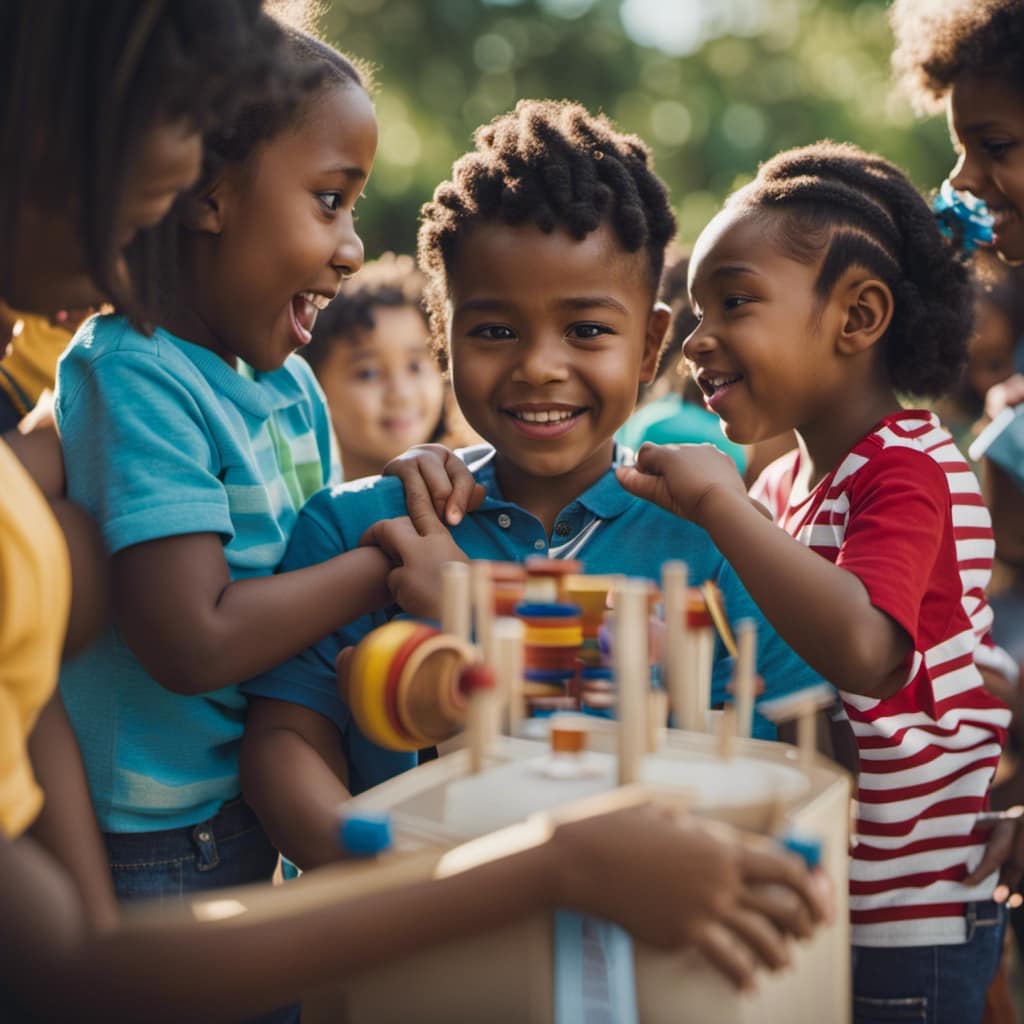
Are the Magnets in the Blocks Safe for Children to Handle?
Yes, the magnets in the blocks are safe for children to handle. They are securely sealed inside the plastic case, preventing any risk of magnets falling off and ensuring safety during playtime.
Can Magnetic Blocks Be Used to Teach Math Concepts?
Yes, magnetic blocks can be used to teach math concepts. By exploring geometric shapes and introducing spatial reasoning, children develop a strong foundation for mathematical thinking. The hands-on nature of magnetic blocks enhances learning and creativity.
What Is the Recommended Age Range for Using Magnetic Blocks?
The recommended age range for using magnetic blocks is 3-5 years old. They are beneficial for different learning stages and promote STEM sensory and Montessori learning. They enhance math, art, and tactile motor skills, while encouraging creativity and problem-solving.
Conclusion
In conclusion, magnetic blocks are a valuable tool for enhancing learning and creativity in young children. These blocks offer numerous benefits, including promoting STEM sensory and Montessori learning, developing color recognition and spatial thinking, and enhancing math, art, and motor skills.
With their securely sealed magnets and rounded edges, these blocks prioritize the safety of children during playtime. As a gift, they provide hours of entertainment and learning, encouraging creativity and problem-solving skills.
Incorporating magnetic blocks into early childhood education is a practical way to foster cognitive development and inspire critical thinking. So, why not unleash your child’s imagination with these magnetic wonders? They truly are a key to unlocking endless possibilities.
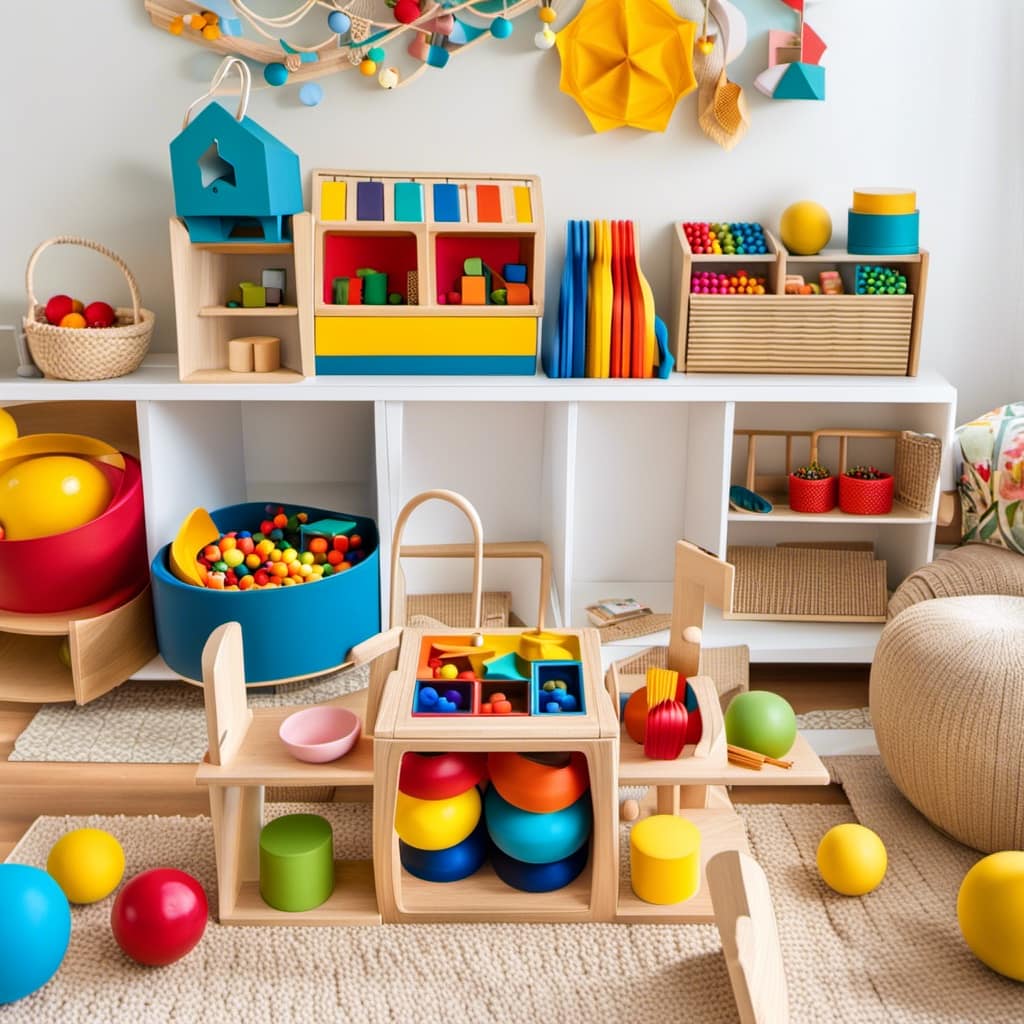
Child Development
Enhance Learning and Development With Qizfun Busy Board and Melissa & Doug Shape Sorter
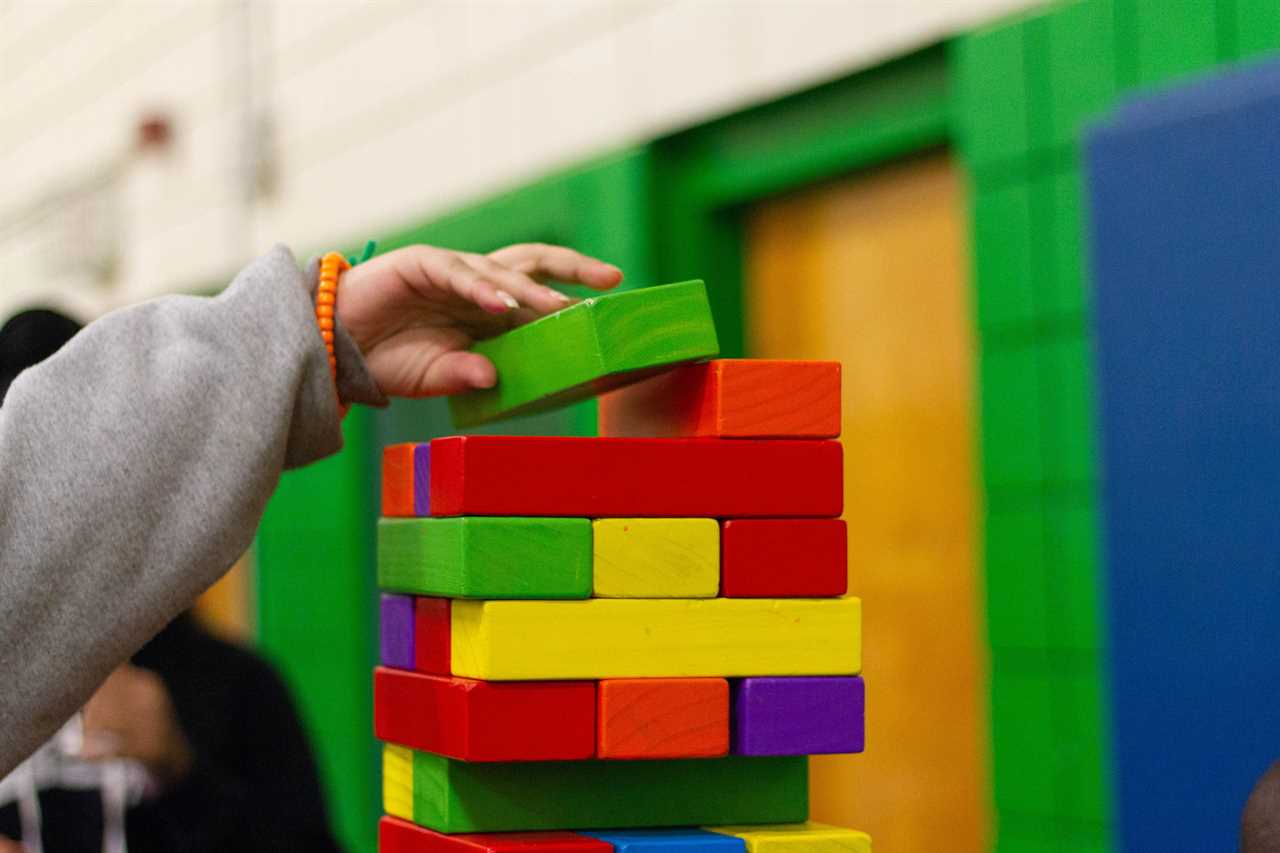
As a caregiver, I am always on the lookout for toys that can both amuse and educate my child at the same time. This is the reason I am excited to share with you the Qizfun Busy Board and the Melissa & Doug Ks Kids Take-Along Shape Sorter.
These toys are not just fun, they’re also designed to enhance learning and development in children. With over 18 different learning activities, the Qizfun Busy Board helps build dexterity, develop fine motor skills, and introduce educational concepts.
And when combined with the interactive and educational toys of the Melissa & Doug Shape Sorter, it creates a playtime experience that promotes learning in a fun and engaging way.
Key Takeaways
- The Qizfun Busy Board and Melissa & Doug Shape Sorter combination provides a variety of interactive and educational toys.
- This combination enhances engagement and entertainment for hours.
- It promotes learning and development in a fun way.
- Both toys are made from durable and safe materials, ensuring a safe playtime experience.
The Benefits of Using Qizfun Busy Board for Learning and Development
I really appreciate how the Qizfun Busy Board offers over 18 different learning activities and helps build dexterity and develop fine motor skills.
This toy has a significant impact on sensory play and child development. Through the various activities, children can engage their senses and explore different textures, shapes, and colors. Sensory play is crucial for the development of their cognitive, social, and emotional skills.
Additionally, the Qizfun Busy Board promotes open-ended play, allowing children to use their imagination and creativity. This type of play encourages problem-solving, critical thinking, and decision-making skills.
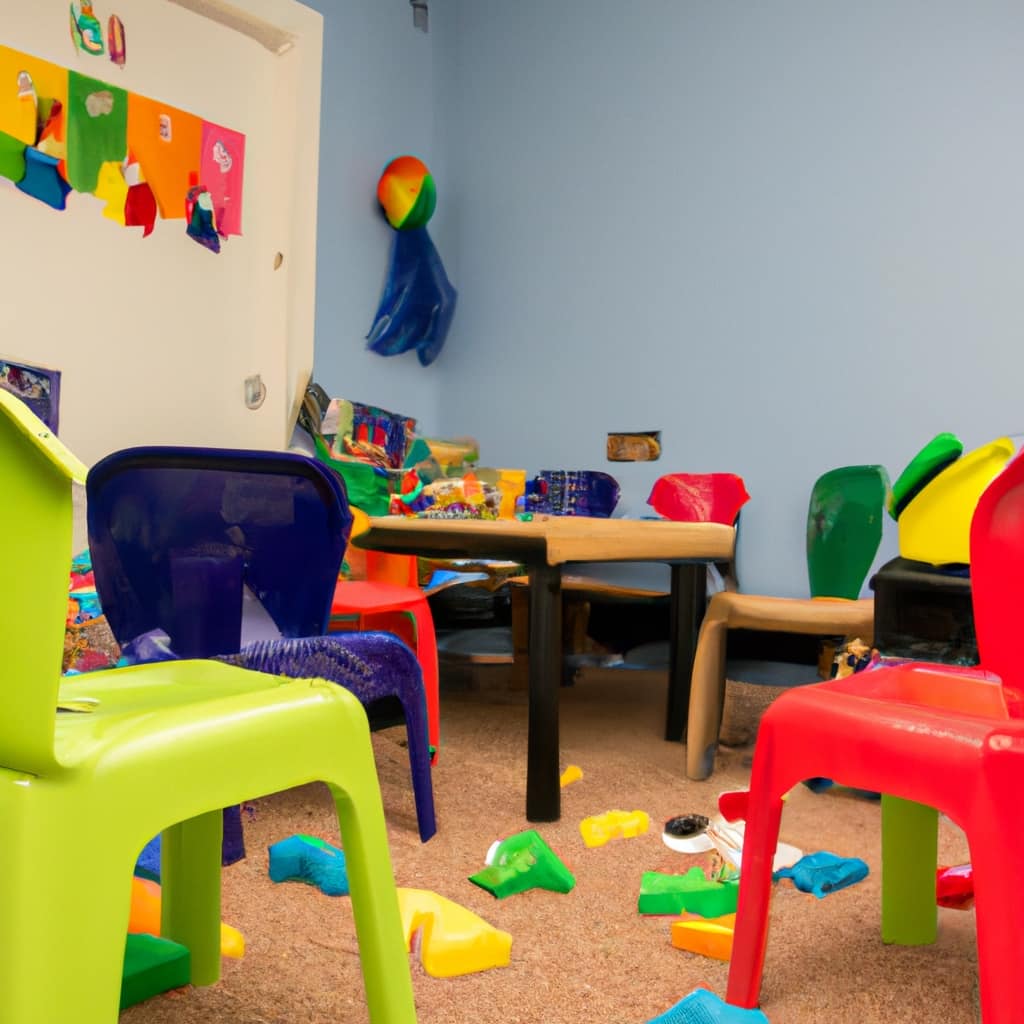
How Qizfun Busy Board Enhances Fine Motor Skills and Cognitive Development
Playing with the Qizfun Busy Board and Melissa & Doug Shape Sorter helps children develop their fine motor skills and cognitive abilities through engaging and interactive activities.
The Qizfun Busy Board provides sensory stimulation through its various textures, colors, and shapes, which allows children to explore and learn through touch. This sensory stimulation helps develop their fine motor skills as they manipulate the different elements on the board, such as zippers, buttons, and gears.
Additionally, the Qizfun Busy Board enhances problem-solving skills by presenting children with puzzles and activities that require them to think critically and find solutions. By engaging with these activities, children are able to practice and develop their cognitive abilities, such as logical reasoning and spatial awareness.
Overall, the Qizfun Busy Board is a valuable tool for promoting both fine motor skills and cognitive development in children.
The Importance of Practical Life Skills in Child Development With Qizfun Busy Board
Practicing practical life skills with the Qizfun Busy Board allows children to gain independence and confidence in their everyday activities.
The role of practical life skills in child development cannot be overstated. These skills, such as buttoning shirts, zipping jackets, and tying shoelaces, are essential for children to navigate their daily lives with ease.

When children engage with interactive learning toys like the Qizfun Busy Board, they not only develop these practical skills but also enhance their cognitive development. The impact of interactive learning toys on cognitive development is significant as they promote problem-solving, critical thinking, and decision-making abilities.
The Qizfun Busy Board, with its various activities that require fine motor skills and problem-solving, provides a fun and engaging way for children to learn and develop these essential life skills.
Boosting Creativity and Imagination Through Play With Qizfun Busy Board
Engaging with the Qizfun Busy Board sparks creativity and imagination, encouraging children to explore and invent during playtime. The role of play in cognitive development cannot be overstated, and the benefits of open-ended toys like the Qizfun Busy Board are evident in the way they stimulate a child’s mind.
Here are five ways the Qizfun Busy Board promotes creativity and imagination:
- Provides a variety of interactive activities that allow children to think and problem-solve.
- Offers open-ended play opportunities, allowing children to create their own stories and scenarios.
- Stimulates imaginative play by introducing educational concepts in a fun and engaging way.
- Encourages children to think outside the box and come up with unique solutions to challenges.
- Fosters independent thinking and decision-making skills.
Why Qizfun Busy Board and Melissa & Doug Shape Sorter Make a Perfect Combination for Learning
Combining the Qizfun Busy Board with the Melissa & Doug Shape Sorter creates a dynamic duo for interactive and educational play.
The Qizfun Busy Board offers a range of learning activities that help build dexterity and develop fine motor skills. It introduces educational concepts like zippers, gears, and buttons, making learning fun and engaging.

On the other hand, the Melissa & Doug Shape Sorter enhances cognitive skills by encouraging hands-on play. Children can explore different shapes and colors while developing problem-solving and creative thinking skills.
The combination of these two toys provides a well-rounded learning experience. Hands-on play is vital for cognitive development, and these toys offer an excellent opportunity for children to learn and grow while having fun.
How Melissa & Doug Shape Sorter Enhances Learning and Development
While using the Melissa & Doug Shape Sorter, I can see how it promotes hands-on exploration and problem-solving skills. The role of sensory play in child development is crucial, and this toy provides a great opportunity for children to engage their senses and learn through tactile experiences.
The benefits of open-ended toys in early childhood education are well-known, and the Shape Sorter fits perfectly in this category. Here are five ways the Melissa & Doug Shape Sorter enhances learning and development:
- Encourages fine motor skills development through grasping and manipulating shapes.
- Promotes cognitive skills by teaching children to recognize shapes and colors.
- Fosters problem-solving skills as children figure out which shape goes where.
- Enhances hand-eye coordination as children match and fit the shapes.
- Stimulates creativity and imagination as children explore different ways to play with the toy.
Overall, the Melissa & Doug Shape Sorter is a valuable tool for children’s learning and development, providing a fun and engaging sensory play experience.
The Power of Interactive and Educational Toys in Enhancing Learning With Qizfun Busy Board and Melissa & Doug Shape Sorter
I can see the impact of interactive and educational toys on children’s engagement and cognitive growth. The power of toys like the Qizfun Busy Board and Melissa & Doug Shape Sorter in enhancing learning is remarkable.
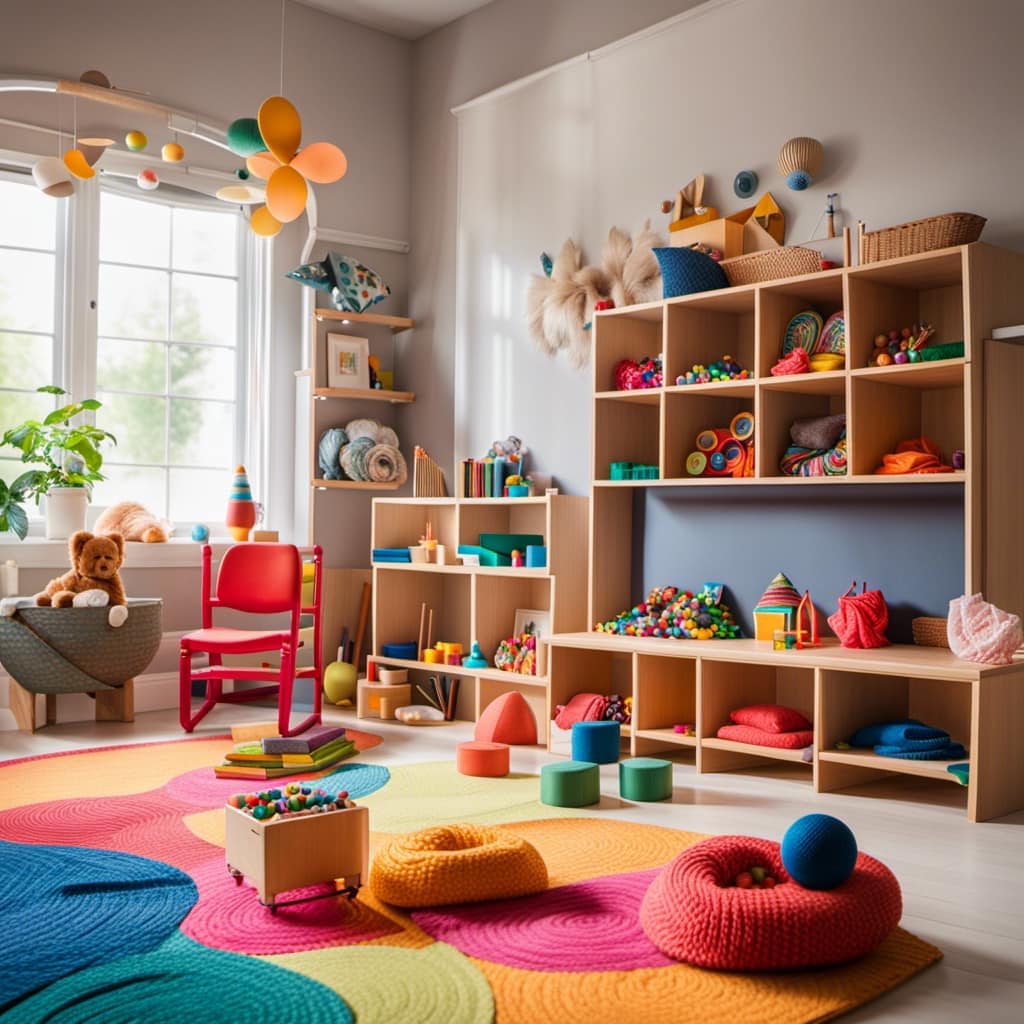
The Qizfun Busy Board offers over 18 different learning activities that help build dexterity and develop fine motor skills. It introduces educational concepts such as zippers, gears, and buttons, making learning fun and interactive. Additionally, the Qizfun Busy Board focuses on practical life skills, which are crucial for child development. It helps children learn basic life skills like zipping and buttoning, promoting independence and self-confidence.
The Melissa & Doug Shape Sorter also enhances learning by promoting problem-solving skills and hand-eye coordination. These interactive and educational toys provide a valuable learning experience for children, fostering their cognitive development and preparing them for future success.
Frequently Asked Questions
Can the Qizfun Busy Board Be Used by Children Older Than 4 Years Old?
Yes, the Qizfun busy board can be used by children older than 4 years old. It enhances learning and development by promoting fine motor skills, problem-solving, and recognition of letters and numbers.
Is the Qizfun Busy Board Machine Washable?
No, the Qizfun Busy Board is not machine washable. However, it is made from durable and easy-to-clean materials. The sensory benefits of the board, such as tactile exploration, remain intact even without machine washing.
Can the Qizfun Busy Board Be Used as a Sensory Toy?
Yes, the Qizfun Busy Board can be used as a sensory toy. It helps with sensory development and fine motor skills through its interactive activities like zippers, buttons, and gears.
Does the Melissa & Doug Shape Sorter Come With Different Shape Options?
Yes, the Melissa & Doug shape sorter is suitable for toddlers. It offers different shape options for them to sort and learn. As for the Qizfun busy board, it can definitely help improve fine motor skills.
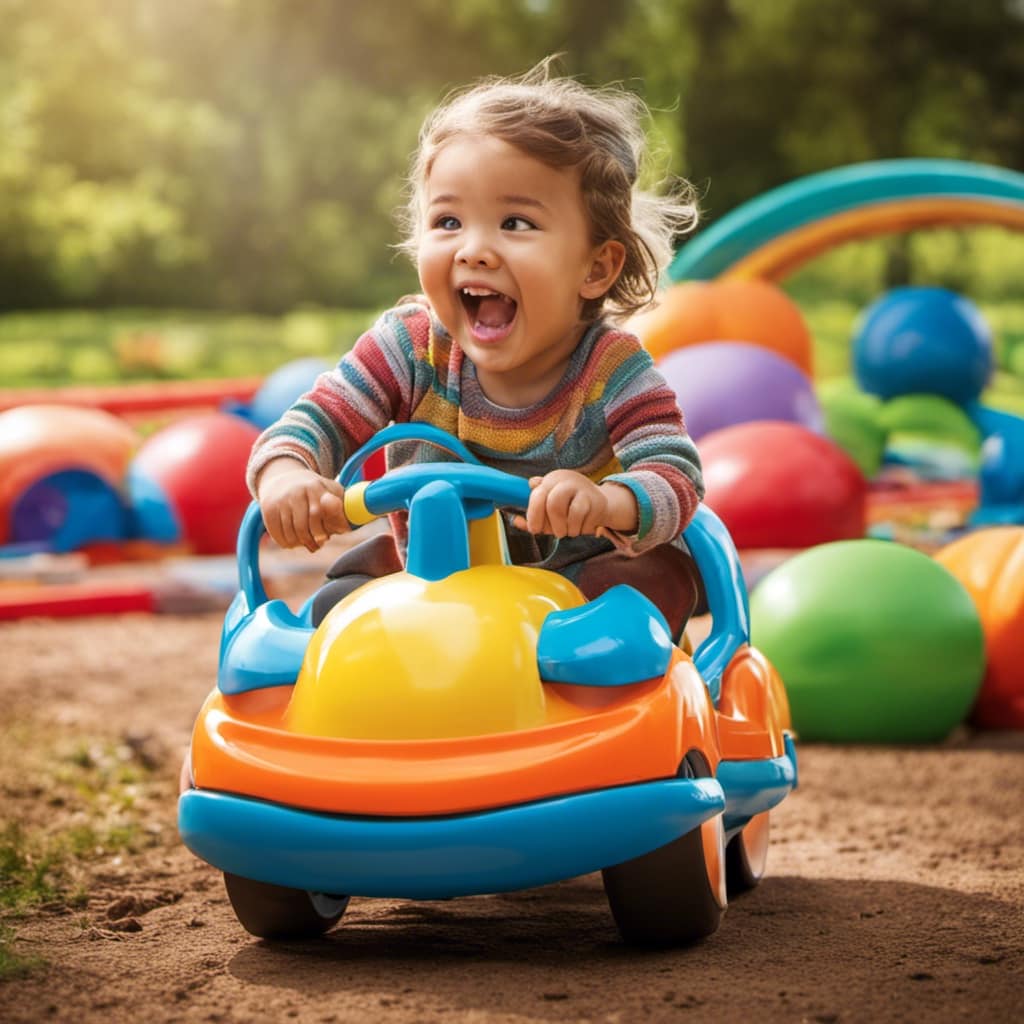
Are There Any Additional Accessories or Attachments That Can Be Purchased for the Qizfun Busy Board?
Yes, additional accessories can be purchased for the Qizfun Busy Board. It is also machine washable, making it easy to clean and maintain.
Conclusion
In conclusion, the Qizfun Busy Board and Melissa & Doug Shape Sorter are exceptional toys that greatly enhance learning and development in children.
The Qizfun Busy Board offers a wide range of educational activities that promote fine motor skills, cognitive development, practical life skills, and creativity.
The Melissa & Doug Shape Sorter provides interactive and engaging toys that further enhance learning.
Together, these toys create a perfect combination for a fun and enriching playtime experience.
With these toys, children can explore, learn, and grow in a safe and educational manner.
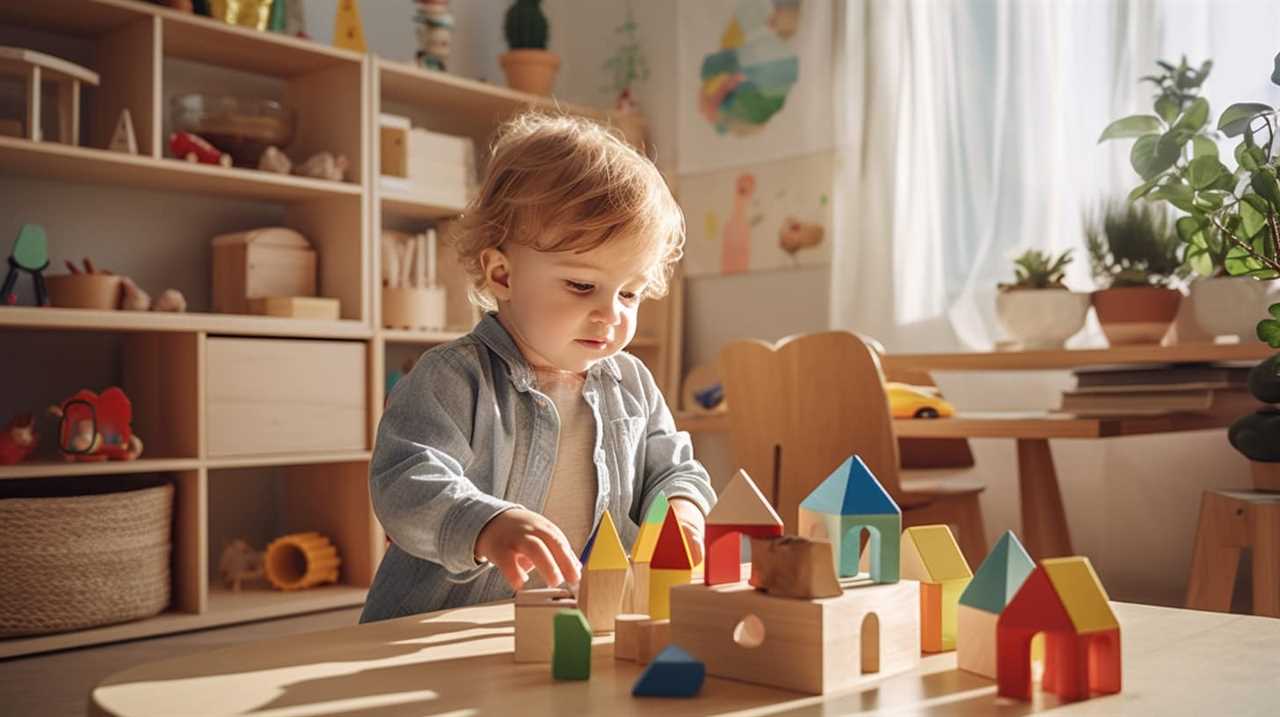
It’s like having a magical playground of learning at your fingertips!
Child Development
Enhance Skills and Creativity With Wooden Stacking Stones and Brain Flakes!

As a parent, I’m always on the lookout for toys that engage my child’s creativity and enhance their imaginative skills. That’s why I’m excited to share with you two incredible toy sets that have truly captured my attention – the BESTAMTOY Wooden Stacking Stones and the VIAHART Brain Flakes.
These toys are not only fun, but they also enhance essential skills like fine motor skills, logical thinking, and problem-solving abilities.
So, join me as we dive into the world of building and creating with these versatile and captivating toys!
Key Takeaways
- The BESTAMTOY 36 PCS Wooden Stacking Stones are a fantastic toy that helps improve fine motor skills, visual-spatial skills, and logical thinking.
- The wooden stacking stones are made of high-quality wood and coated with eco-friendly paint, making them a safe and durable option for play.
- The size of the blocks may be smaller than expected, so age appropriateness should be considered.
- The VIAHART Brain Flakes set offers a complement to the wooden stacking stones, providing a different type of tactile engagement and promoting STEM learning, critical thinking, and experimentation.
The Benefits of Wooden Stacking Stones
I love how the wooden stacking stones not only enhance fine motor skills and logical thinking, but also promote patience and independent thinking.
Sensory play with these stones provides a hands-on experience that engages multiple senses, allowing children to explore different textures, shapes, and weights. This type of play is known to have numerous benefits for children’s development, including improved cognitive abilities and problem-solving skills.
Building spatial awareness is another key benefit of playing with these stacking stones. As children manipulate and arrange the stones, they develop a better understanding of how objects fit together in space. This skill is essential for activities such as puzzle-solving, building structures, and even reading maps.

Overall, the benefits of using wooden stacking stones extend beyond just playtime, nurturing important skills that children can carry with them throughout their lives.
Unleashing Creativity With Brain Flakes
Delving into the world of brain flakes opens up a realm of endless possibilities for imaginative play and artistic expression. These interlocking plastic discs stimulate creativity and unleash artistic expression in children. By offering a different type of tactile engagement compared to traditional building blocks, brain flakes promote spatial awareness and encourage children to think outside the box.
Through hands-on learning, children can experiment and enhance their understanding of fundamental subjects while developing critical thinking skills. The focus on STEM learning ensures that brain flakes not only provide entertainment but also enhance problem-solving abilities. Thoroughly tested for safety and made from safe materials, brain flakes offer worry-free playtime for children of all ages.
With their versatility and engaging nature, brain flakes complement other toys like wooden stacking stones, providing a creative and educational playtime experience that captivates and enhances the learning potential of the main product.
Developing Essential Skills Through Play
Engaging in play helps children develop important abilities and acquire essential knowledge. The role of play in child development cannot be underestimated. It is through play that children learn and practice various skills that are crucial for their overall development.
Hands-on learning activities, such as playing with wooden stacking stones and brain flakes, offer numerous benefits. These activities enhance fine motor skills, spatial awareness, logical thinking, problem-solving abilities, creativity, and critical thinking skills. By engaging in hands-on play, children gain a deeper understanding of fundamental subjects like science, technology, engineering, and mathematics (STEM).
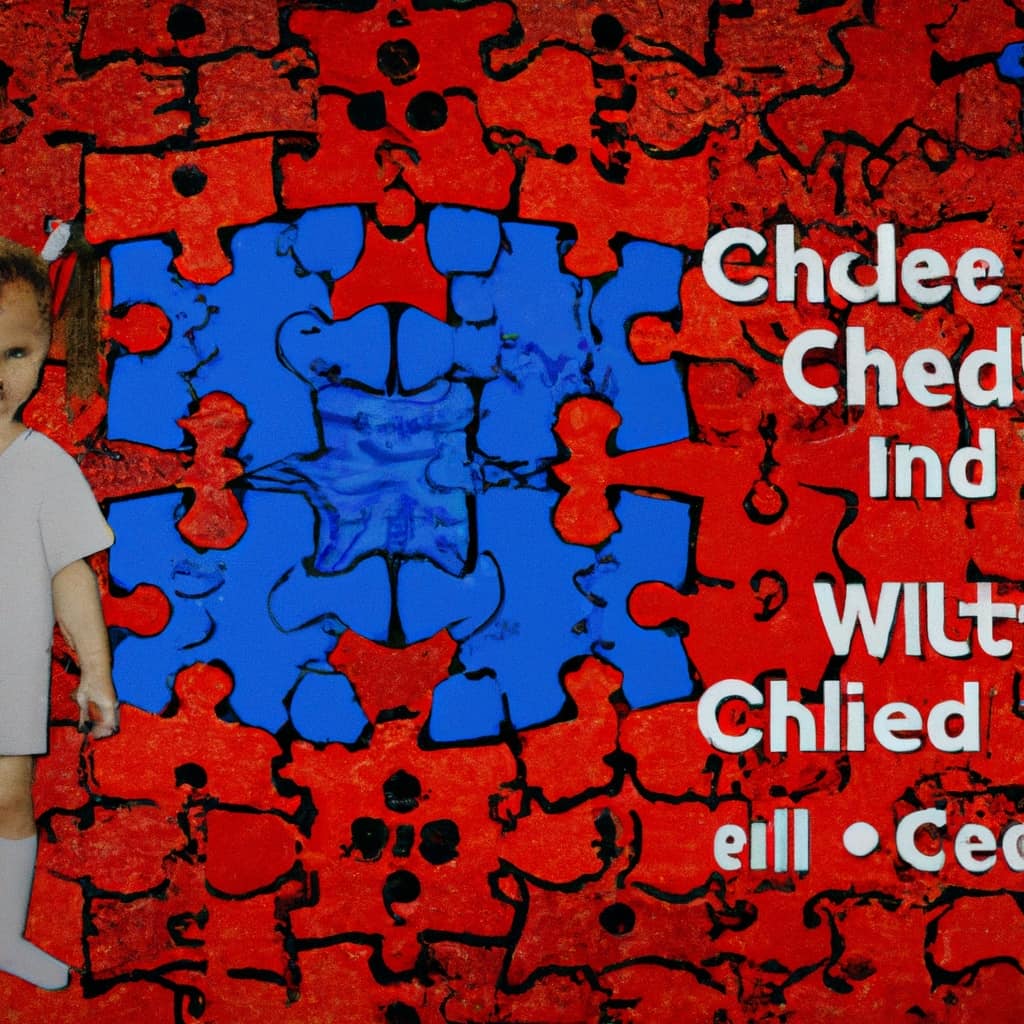
Furthermore, hands-on activities foster a sense of curiosity, experimentation, and independent thinking. Overall, incorporating play into a child’s routine is vital for their holistic development and provides them with a fun and engaging way to acquire new skills and knowledge.
Exploring the World of Building and Creating
Exploring the world of building and creating with these toys has opened up a whole new realm of possibilities for me. The BESTAMTOY 36 PCS Wooden Stacking Stones and VIAHART Brain Flakes set have allowed me to unleash my creativity and enhance my skills in various ways.
Here are some key aspects I discovered while exploring these toys:
-
Exploring different building techniques: These toys provide a platform to experiment with different building techniques, from stacking and sorting with the wooden stacking stones to interlocking and creating unique structures with the brain flakes.
-
Encouraging cooperative play and teamwork: Both toys promote cooperative play and teamwork as children can work together to build structures and solve problems, fostering important social skills.
-
Enhancing problem-solving abilities: Through trial and error, these toys encourage problem-solving abilities as children figure out how to balance the wooden stacking stones or connect the brain flakes to create stable structures.

-
Stimulating imagination and creativity: The open-ended nature of these toys allows for limitless possibilities, sparking imagination and promoting creative thinking.
-
Developing fine motor skills: Manipulating the wooden stacking stones and brain flakes helps improve fine motor skills, hand-eye coordination, and dexterity.
Overall, these toys offer an exciting and educational experience, encouraging exploration, cooperation, and the development of essential skills.
Enhancing Problem-Solving Abilities With Stacking Stones and Brain Flakes
While playing with these toys, I discovered that they greatly improved my problem-solving abilities. The tactile nature of building toys like stacking stones and brain flakes allows for hands-on exploration and experimentation, which enhances cognitive skills and problem-solving techniques. These toys encourage critical thinking and logical reasoning as children navigate through the challenges of constructing various structures. The act of physically manipulating and arranging the pieces helps develop spatial awareness and fine motor skills. Additionally, the open-ended nature of building toys promotes creativity and imagination, allowing children to think outside the box and come up with unique solutions to problems. Overall, engaging in tactile play with building toys like stacking stones and brain flakes provides a fun and effective way to enhance problem-solving abilities and improve cognitive skills.
| Benefits of Building Toys |
|---|
| Improves problem-solving techniques |
| Enhances cognitive skills |
| Promotes creativity and imagination |
| Develops spatial awareness |
| Enhances fine motor skills |
| Encourages logical reasoning |
Maximizing Learning Potential With Versatile Toys
I found that playing with these versatile toys greatly expanded my learning potential. The wooden stacking stones and brain flakes fostered my imagination and innovation in various ways. Here are five key benefits of these toys:
-
Maximizing Learning Potential: These toys provide a hands-on learning experience that engages children in problem-solving, critical thinking, and spatial awareness skills.

-
Fostering Imagination: The open-ended nature of these toys allows children to create endless possibilities, encouraging creativity and imaginative play.
-
Enhancing Fine Motor Skills: Manipulating and stacking the wooden stones and interlocking plastic discs helps develop fine motor skills and hand-eye coordination.
-
Promoting Collaboration: These toys can be enjoyed individually or with others, promoting social skills, teamwork, and communication.
-
Encouraging Innovation: The unique designs and construction methods of these toys inspire innovative thinking and experimentation.
Overall, these versatile toys offer a fun and educational way to maximize learning potential while fostering imagination and innovation in children.
Frequently Asked Questions
How Do I Clean and Maintain the Wooden Stacking Stones?
To clean and maintain the wooden stacking stones, I recommend using a damp cloth to wipe off any dirt or debris. Avoid using harsh chemicals or submerging them in water. Store them in a dry place to prevent damage.

Can the Wooden Stacking Stones Be Used Outdoors?
Yes, the wooden stacking stones can be used outdoors. They are durable and can withstand outdoor conditions. Additionally, they add a natural beauty to outdoor play spaces, enhancing the overall experience.
Are There Any Additional Accessories or Expansion Packs Available for the Wooden Stacking Stones?
No, there are no additional accessories or expansion packs available for the wooden stacking stones. However, you can get creative and use brain flakes with other toys to enhance your building and imaginative play experiences.
Can the Brain Flakes Be Combined With Other Building Sets or Toys?
Yes, brain flakes can be combined with LEGO sets to create endless possibilities for building and creativity. The creative potential of brain flakes is vast, allowing children to explore and experiment with their imagination.
Are There Any Age Restrictions or Recommendations for Using the Brain Flakes?
Age restrictions and safety recommendations should be followed when using Brain Flakes. It is important to check the manufacturer’s guidelines to ensure safe play and to determine the appropriate age range for this toy.
Conclusion
In conclusion, the BESTAMTOY Wooden Stacking Stones and VIAHART Brain Flakes are truly remarkable toys. They have the power to transform children’s playtime into a captivating learning experience. These toys not only enhance skills and creativity but also unlock the boundless imagination within every child.
With the BESTAMTOY set, children can build fine motor skills and develop logical thinking. The wooden stacking stones provide a hands-on experience that challenges children to think strategically and problem solve. This set is perfect for children who enjoy building and constructing.
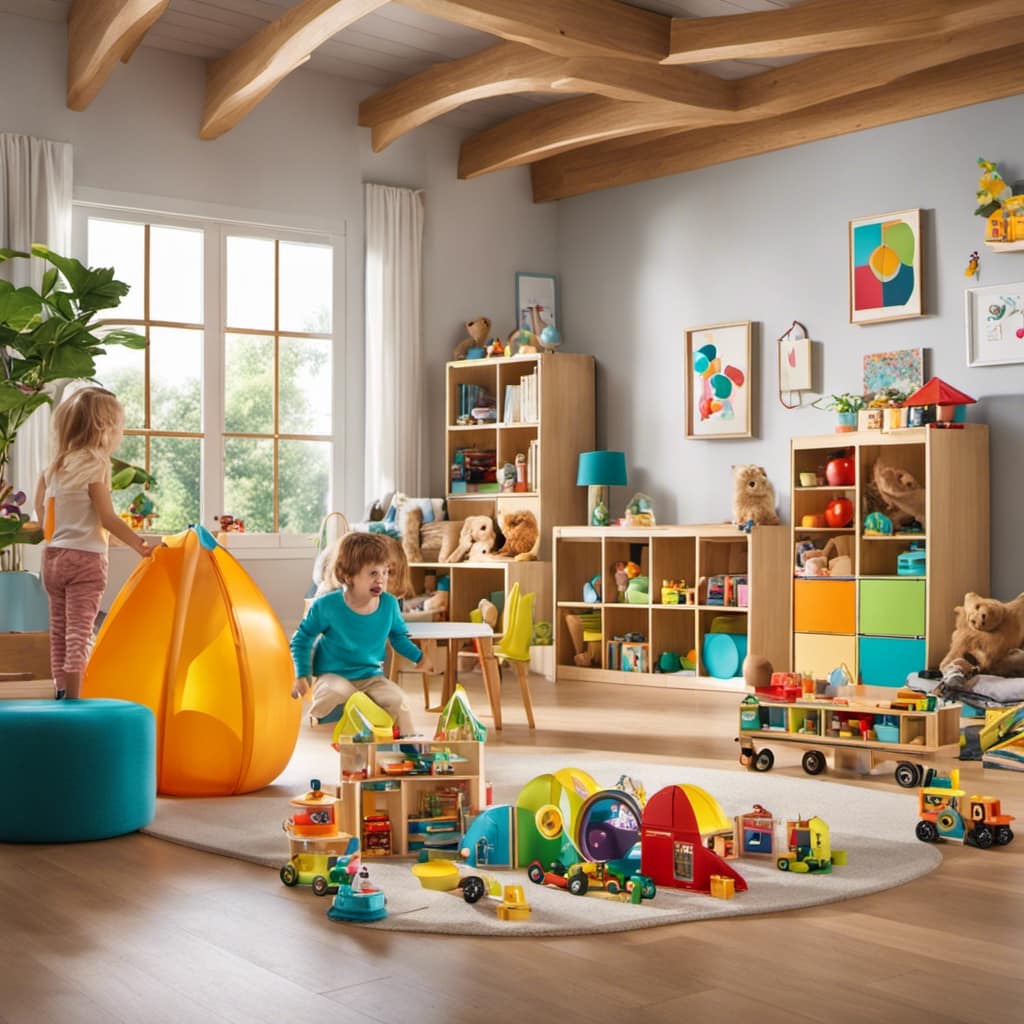
On the other hand, the VIAHART Brain Flakes set sparks creativity and critical thinking. The colorful flakes can be connected in endless ways, allowing children to create unique structures and designs. This set encourages children to think outside the box and explore their imagination.
Together, these toys create a dynamic duo that maximizes learning potential and guarantees endless hours of fun. Children will be engaged and entertained as they explore different possibilities and challenge themselves. So, get ready for a world of limitless possibilities with these amazing toys!
-

 Child Development1 week ago
Child Development1 week agoEgocentrism: Understanding a Child’s Perspective
-

 Child Development2 months ago
Child Development2 months agoThe Benefits of Dramatic Play in Child Development
-

 Child Development2 weeks ago
Child Development2 weeks agoThe Importance of Socialization in Child Development
-
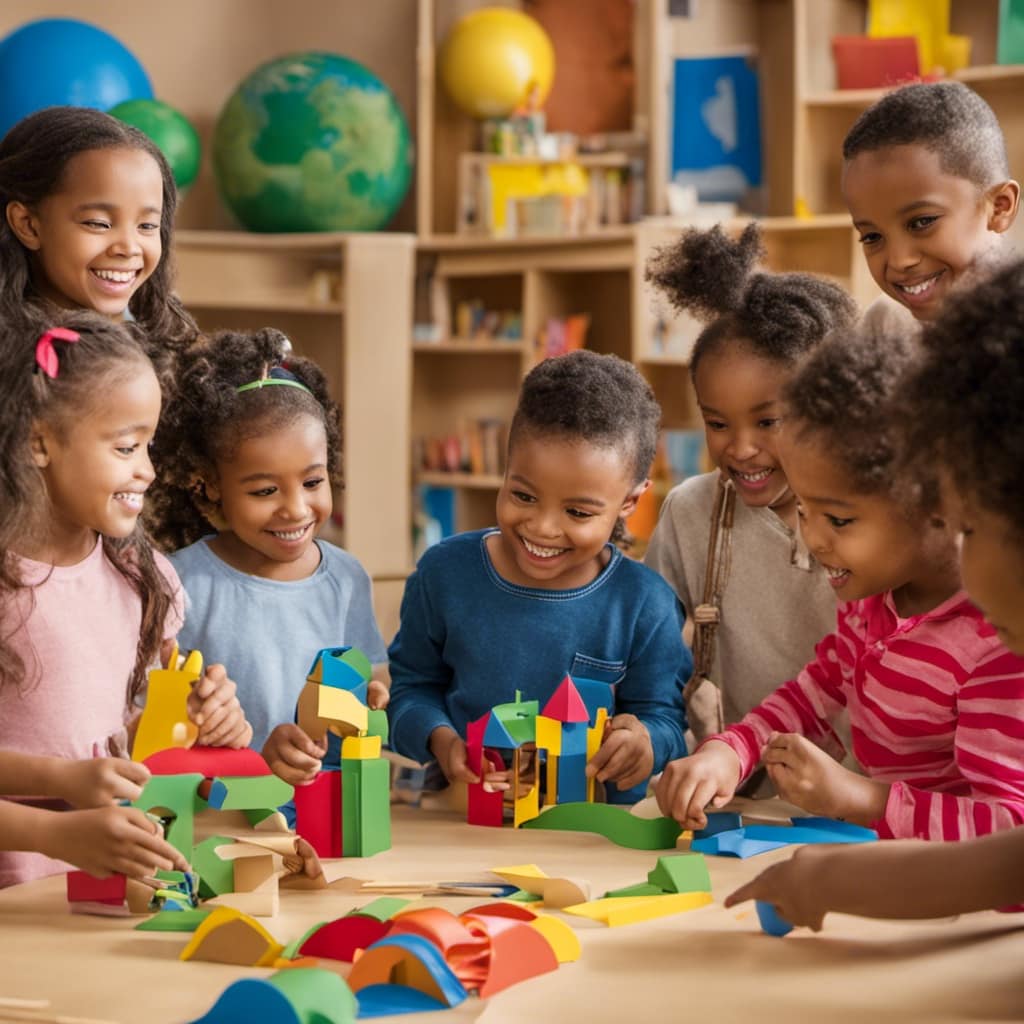
 Child Development2 months ago
Child Development2 months agoSensory Play: Boosting Brain Development and Learning
-

 Child Development2 weeks ago
Child Development2 weeks agoThe Role of PIES in Toddler Development: Enhancing Growth and Skills
-

 Child Development2 months ago
Child Development2 months agoSymbolic Thinking: A Key Milestone in Cognitive Development
-

 Child Development2 weeks ago
Child Development2 weeks agoThe PIES Model: A Holistic Approach to Child Development
-
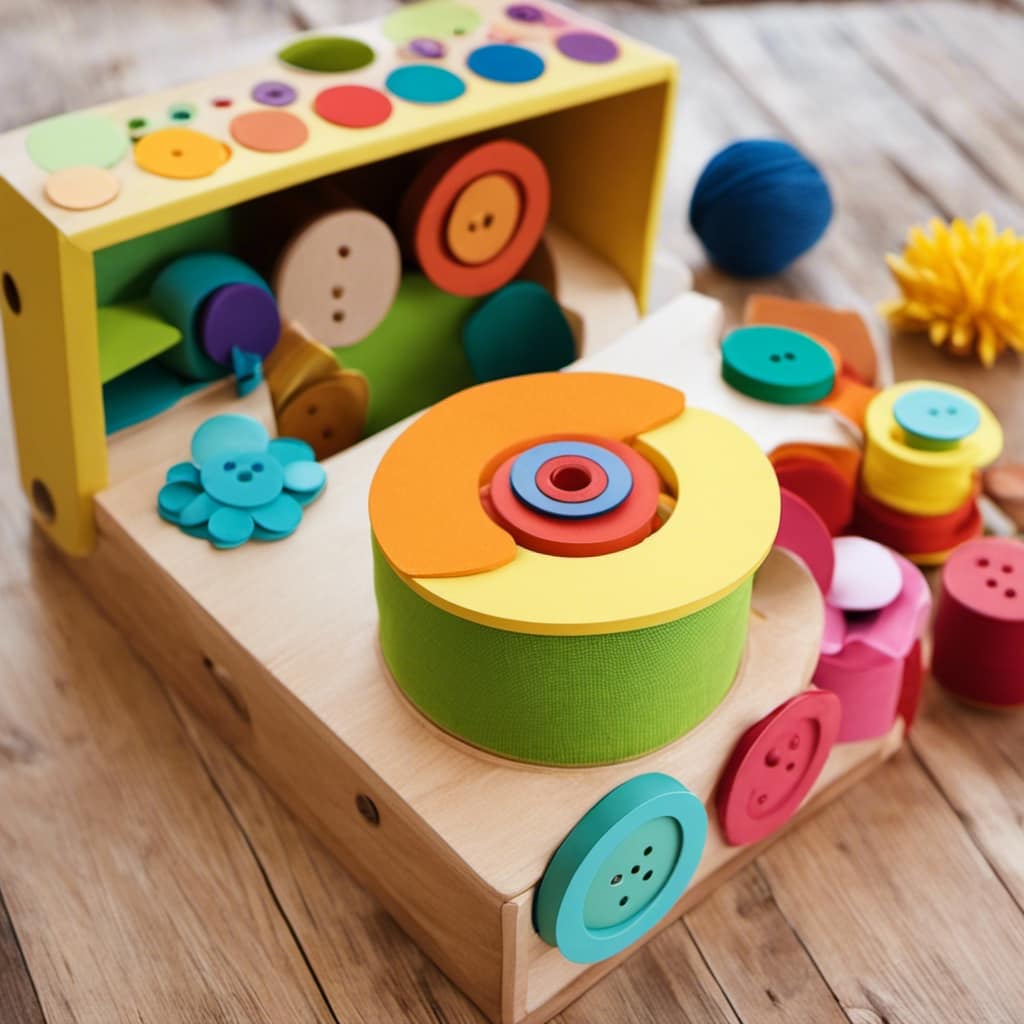
 Child Development2 weeks ago
Child Development2 weeks agoThe Power of Cooperative Play in Child Development
